1947 coupe door
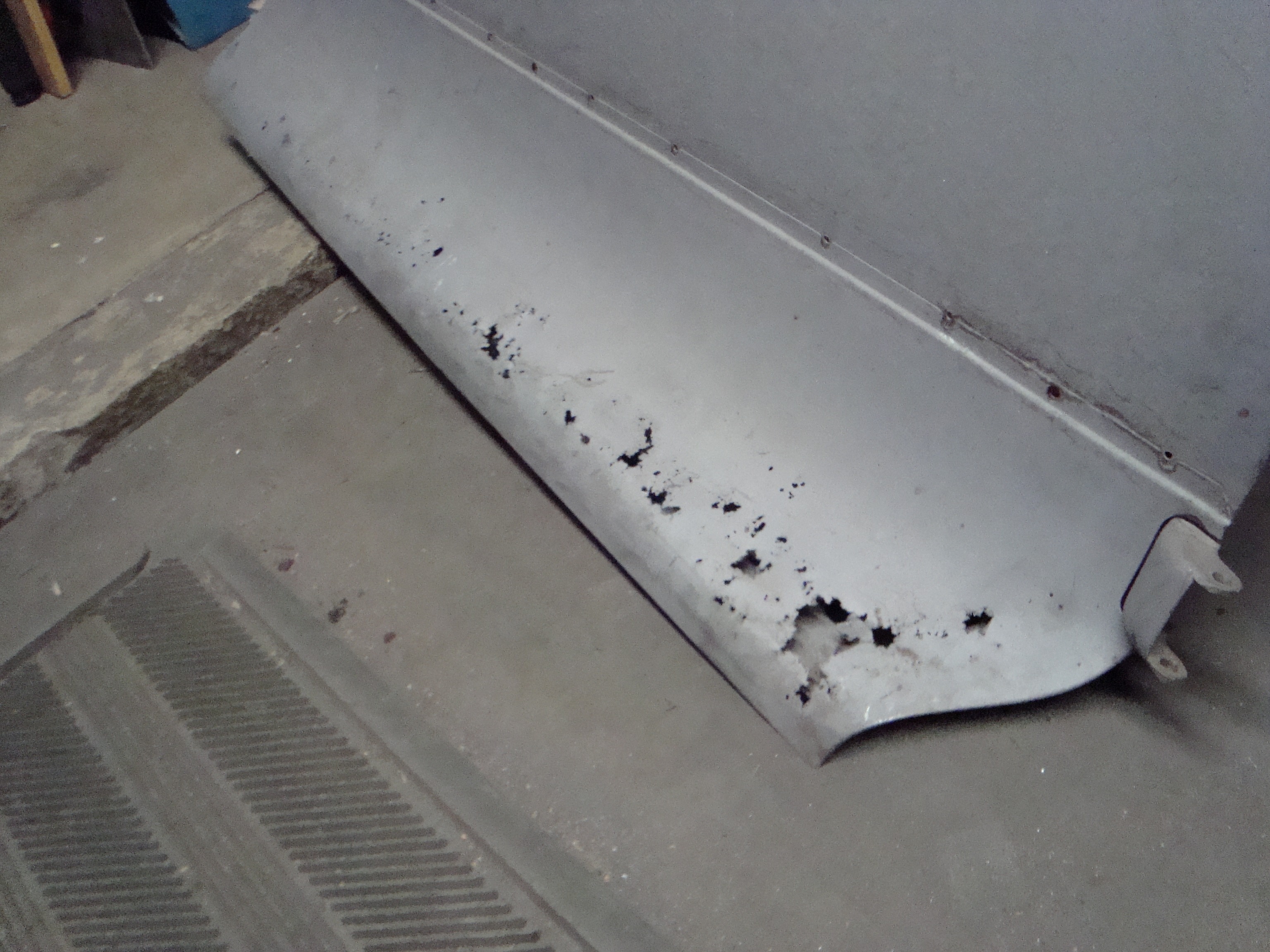
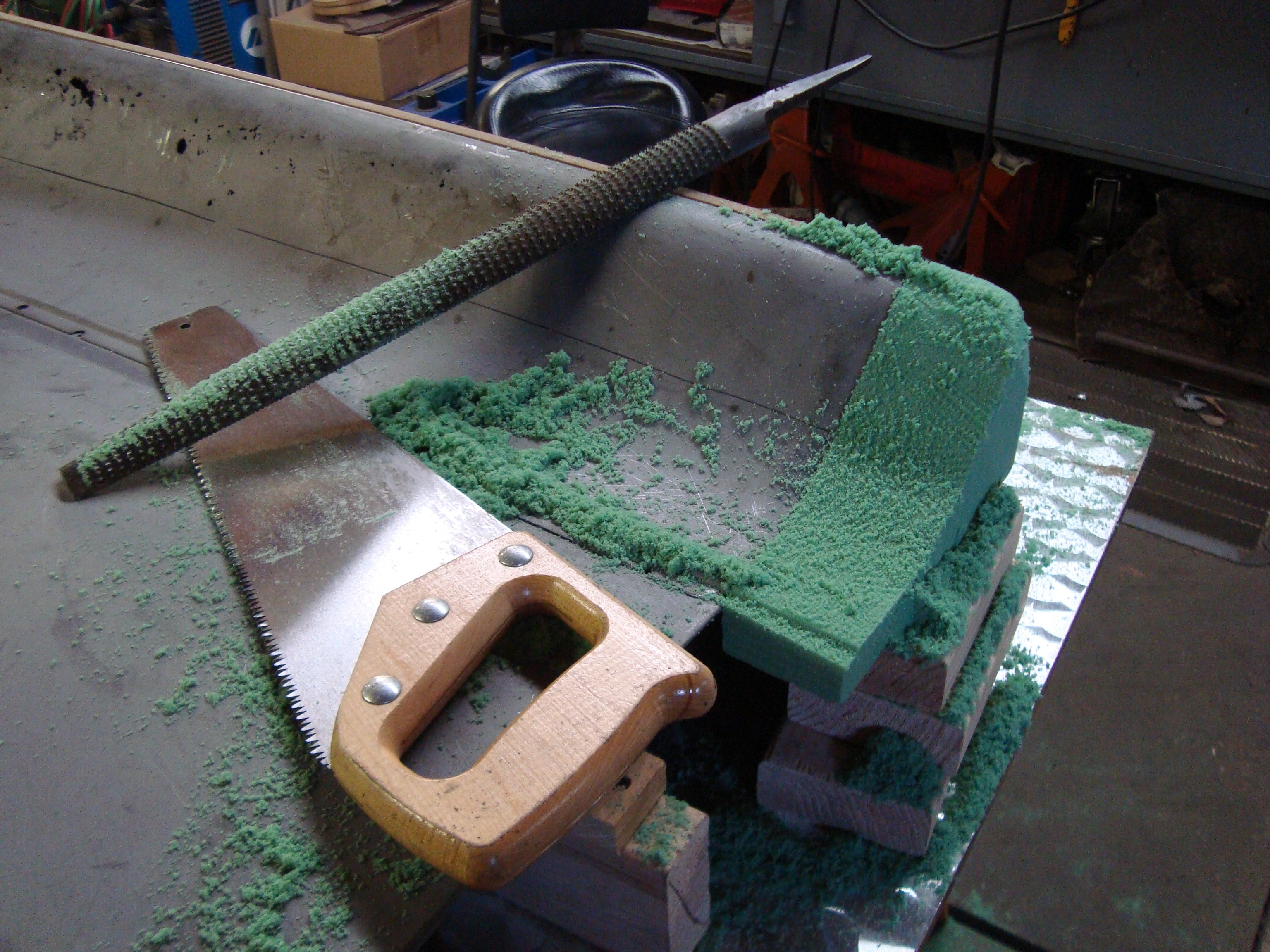
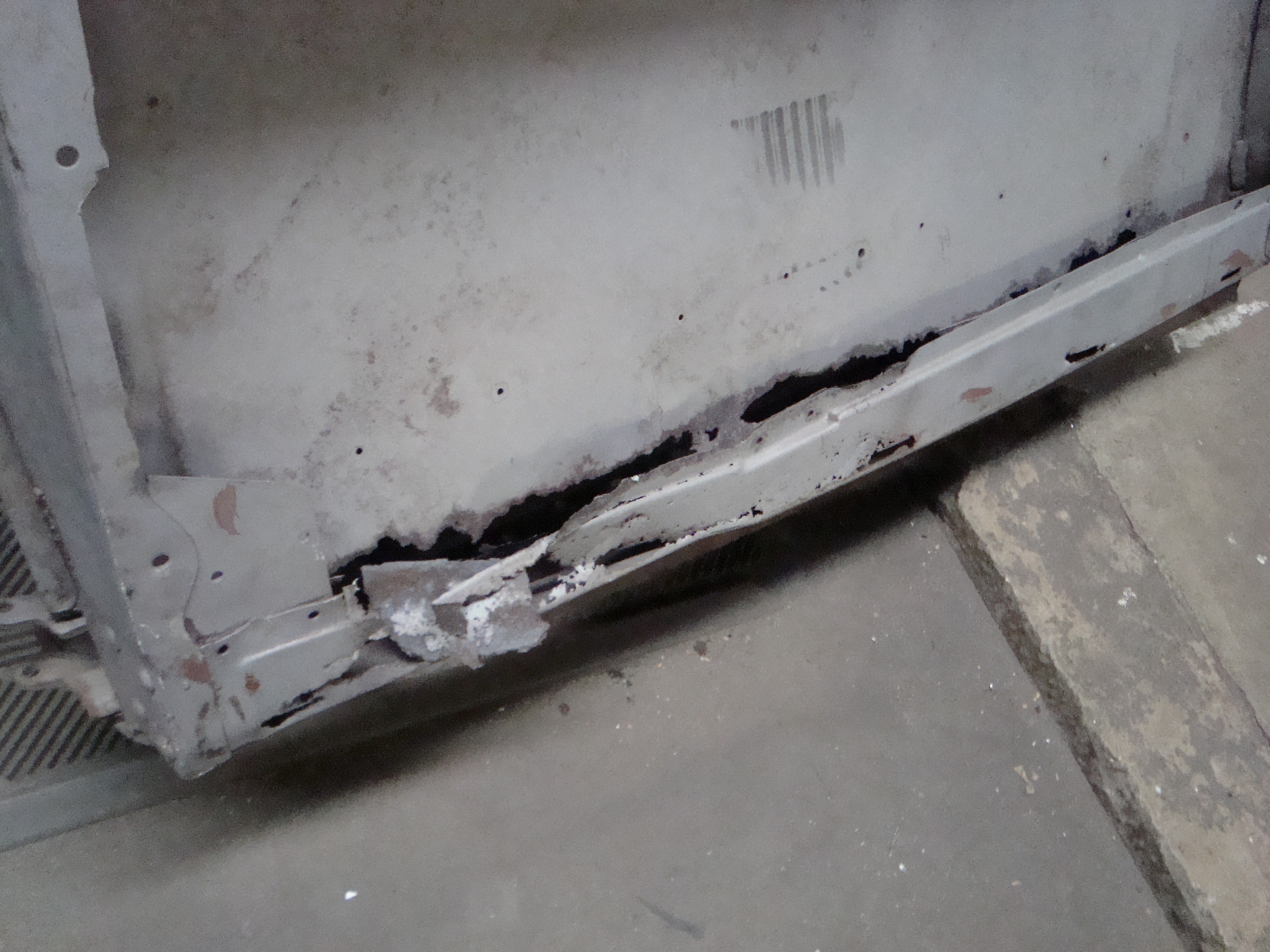
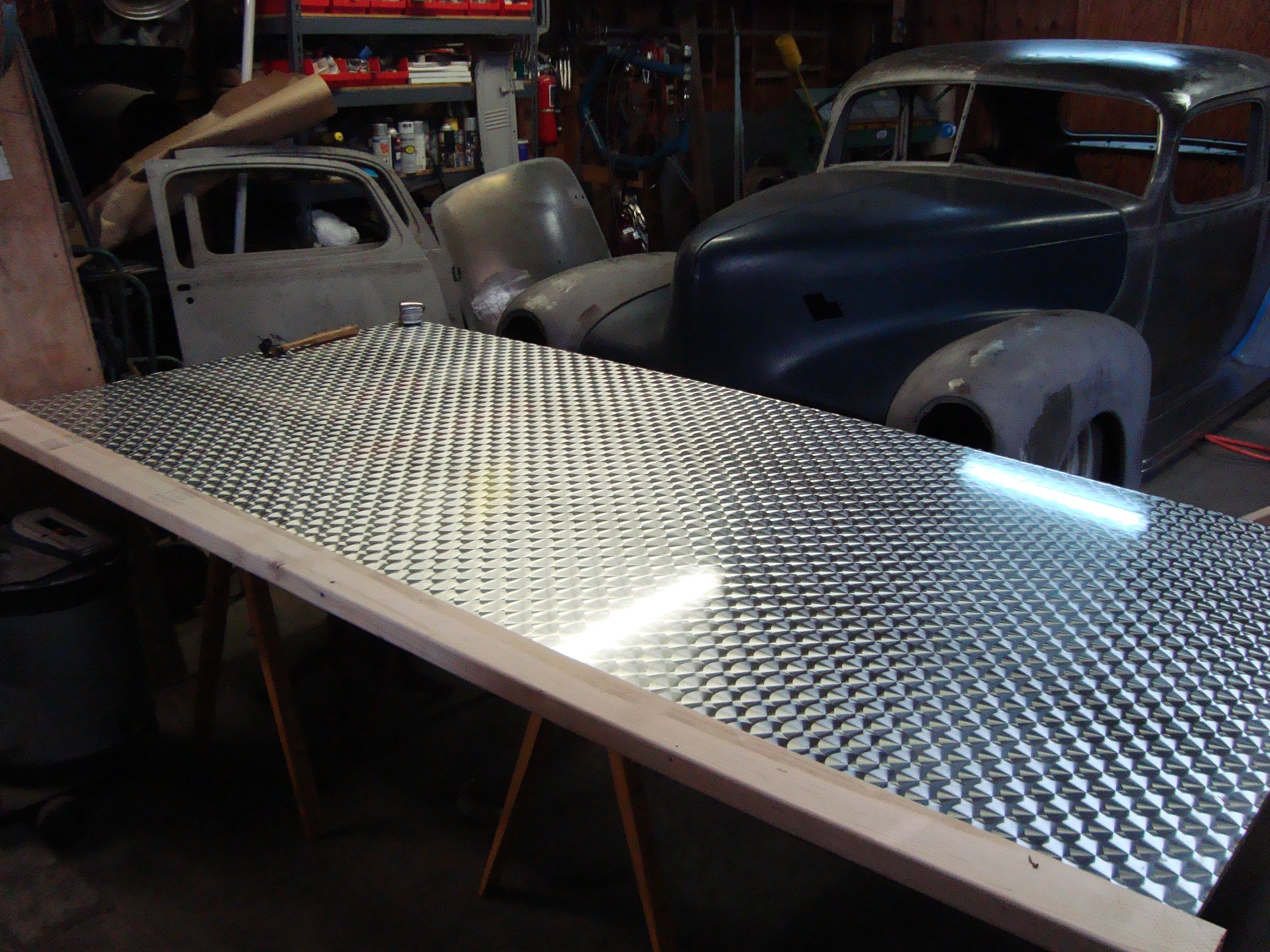
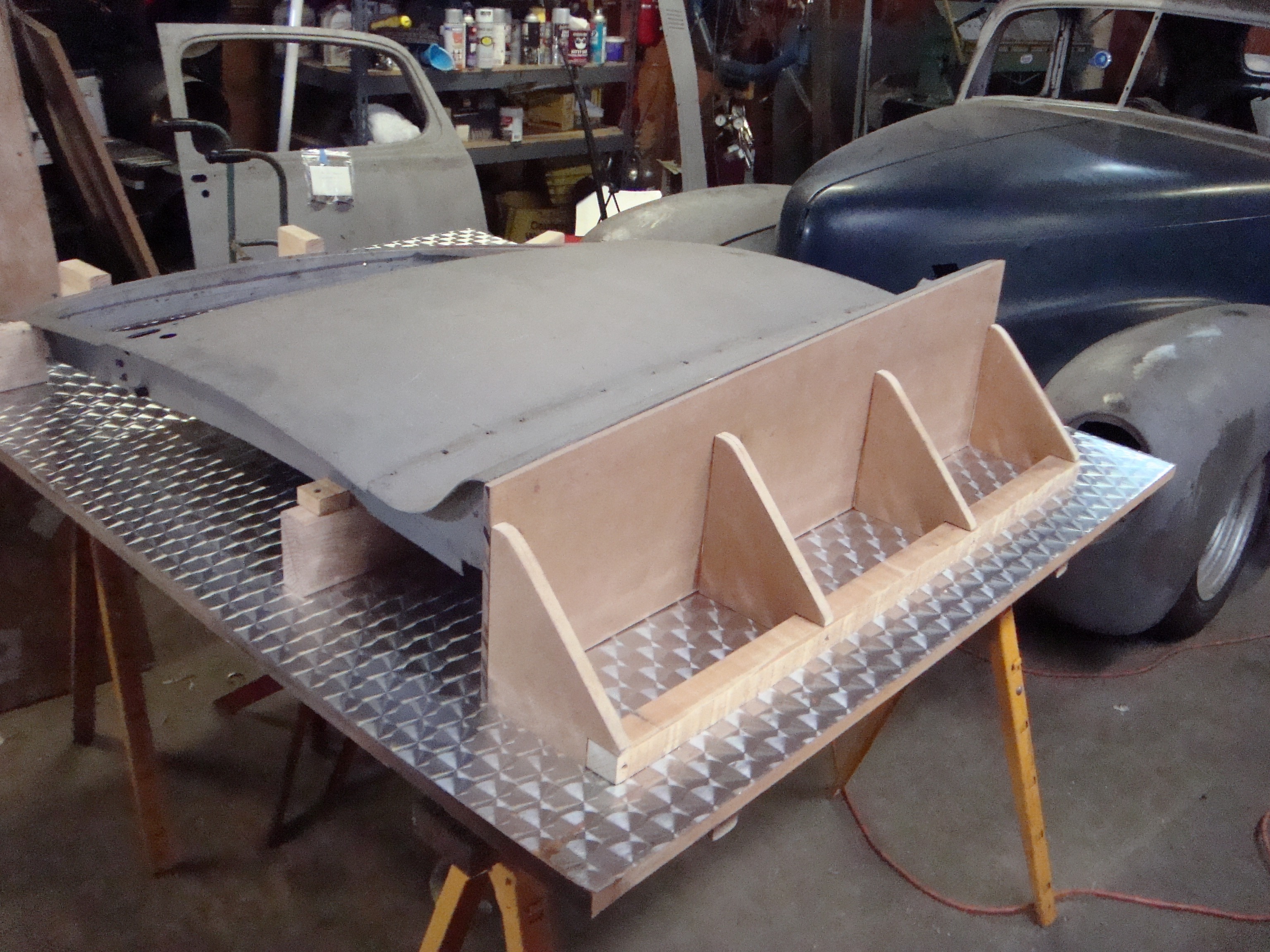
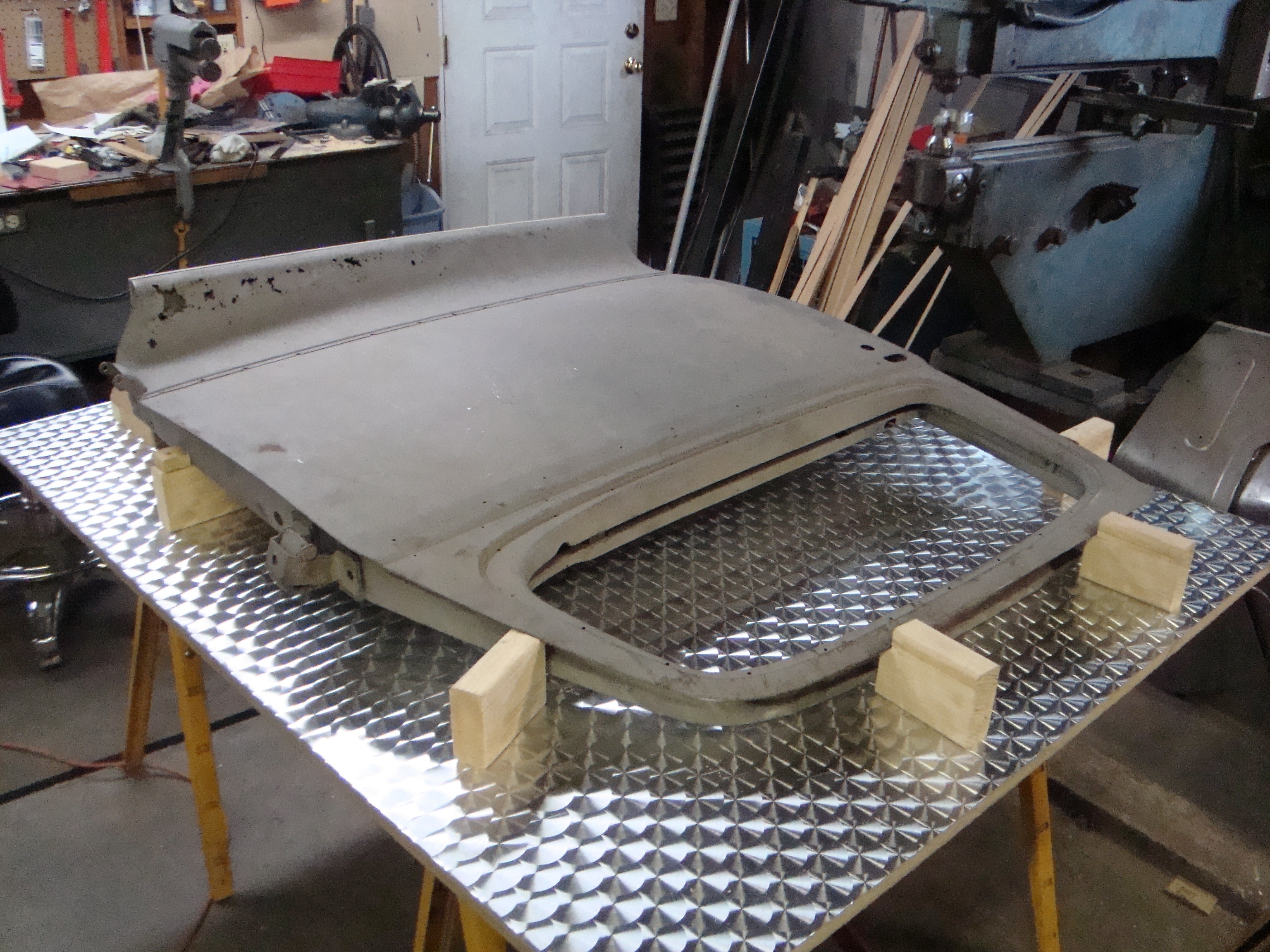
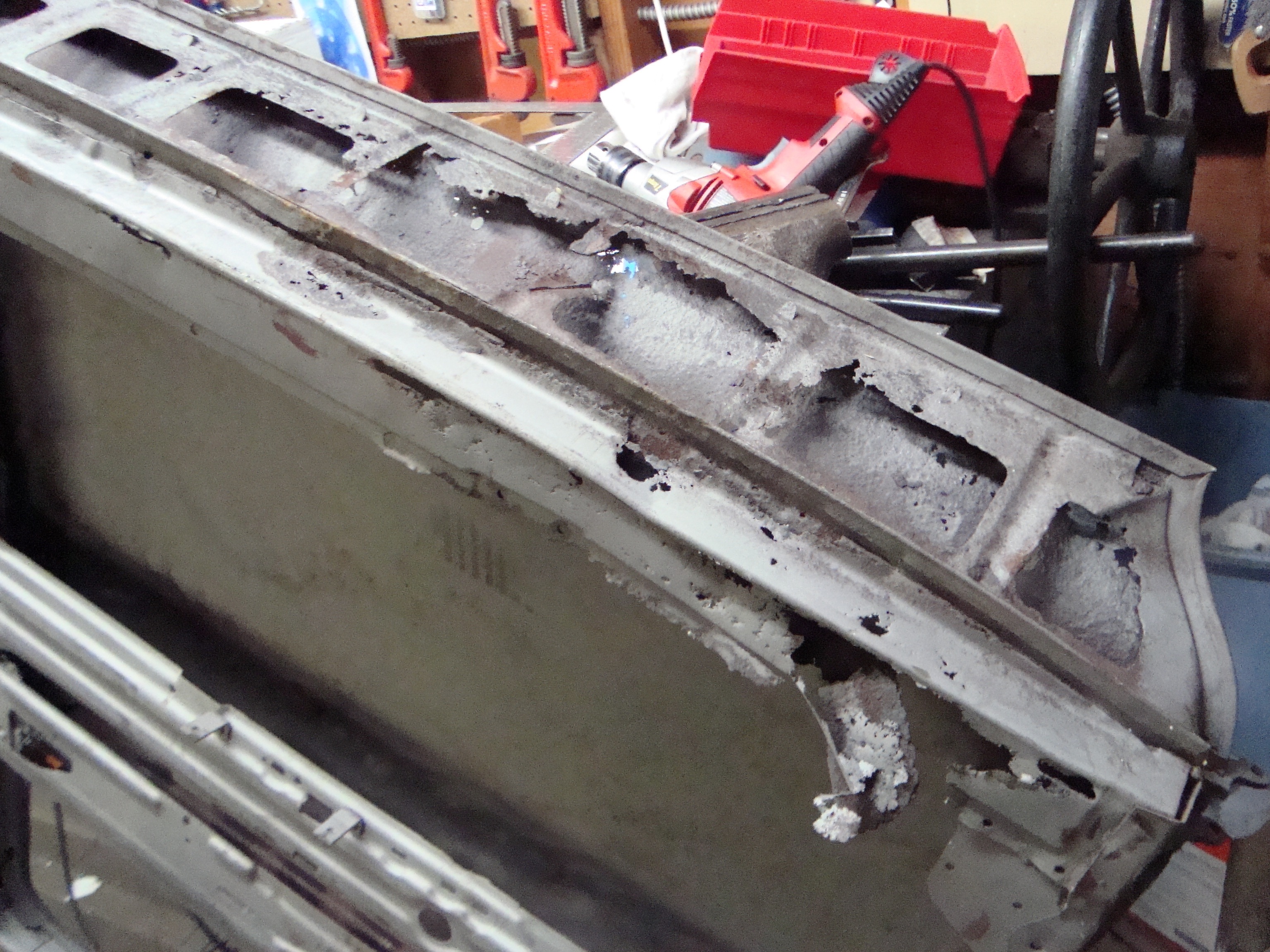
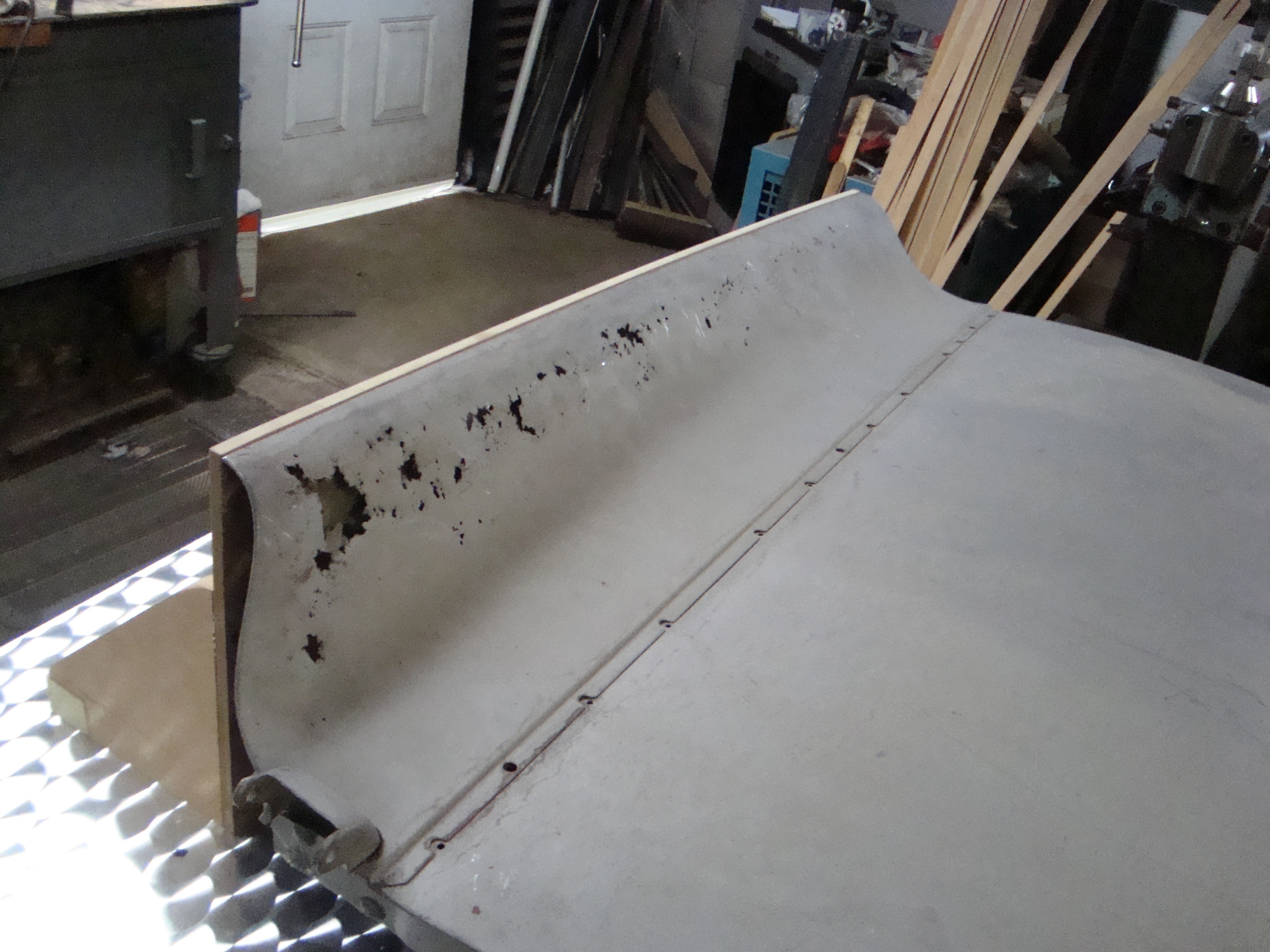 The skirted coupe doors are hard to find not rusted out. By the time you see rust on the outside, you can be sure the inside pieces have already rusted through. The trick with this one was that I didn't have the car. So first order of business was to ask if the door fit well as it was. It did, so I needed to create a jig to hold this door where it could be removed, cut up, pieces taken off and put on. Yet still get it back in a position where that I could measure widths, height, and contours. Started with a nice flat table top. Used wood blocks to secure it. MDF sheet to locate the bottom edge. Florist type bricks to locate the edge shapes and height.
The skirted coupe doors are hard to find not rusted out. By the time you see rust on the outside, you can be sure the inside pieces have already rusted through. The trick with this one was that I didn't have the car. So first order of business was to ask if the door fit well as it was. It did, so I needed to create a jig to hold this door where it could be removed, cut up, pieces taken off and put on. Yet still get it back in a position where that I could measure widths, height, and contours. Started with a nice flat table top. Used wood blocks to secure it. MDF sheet to locate the bottom edge. Florist type bricks to locate the edge shapes and height.
Comments
-
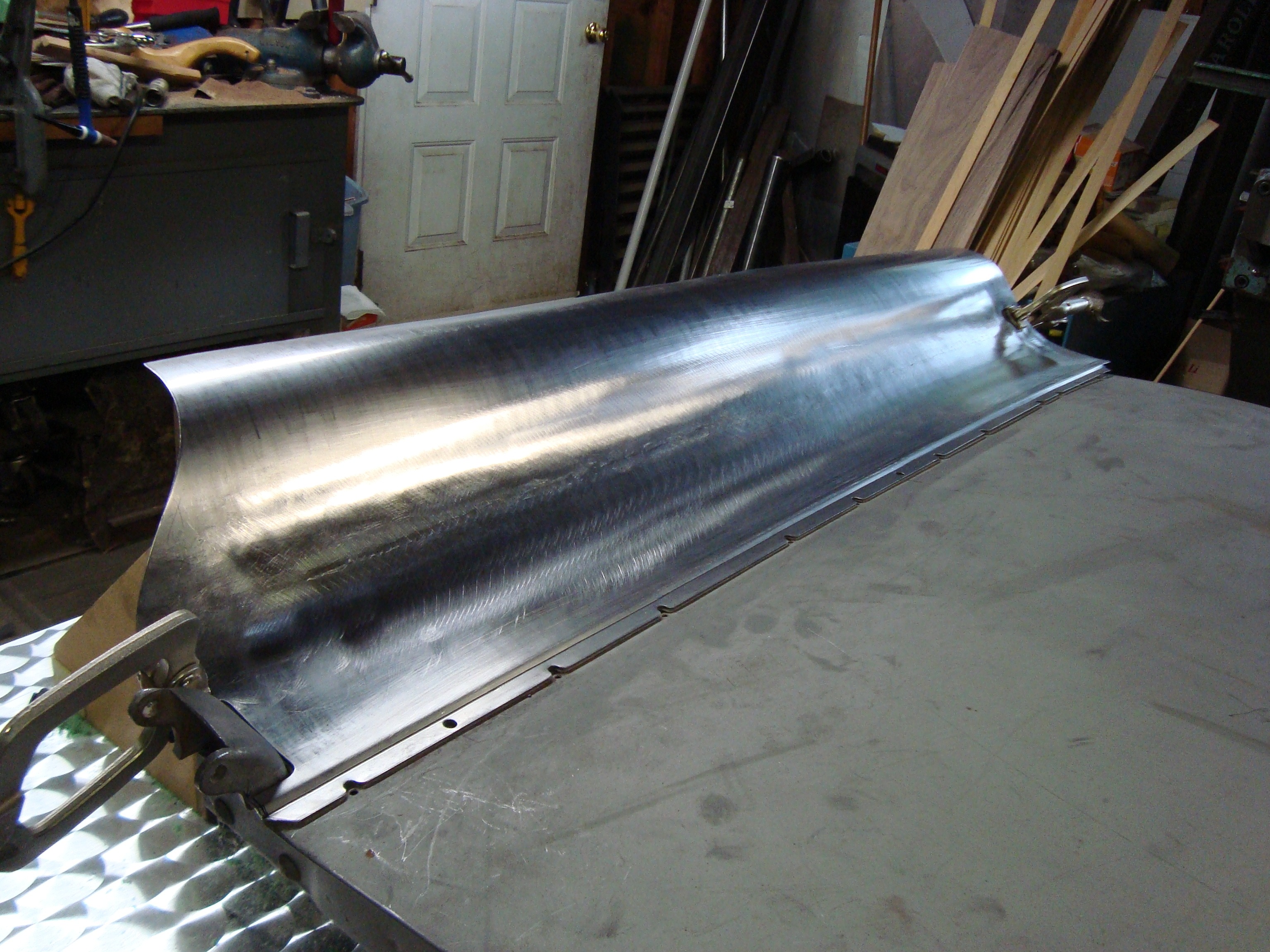
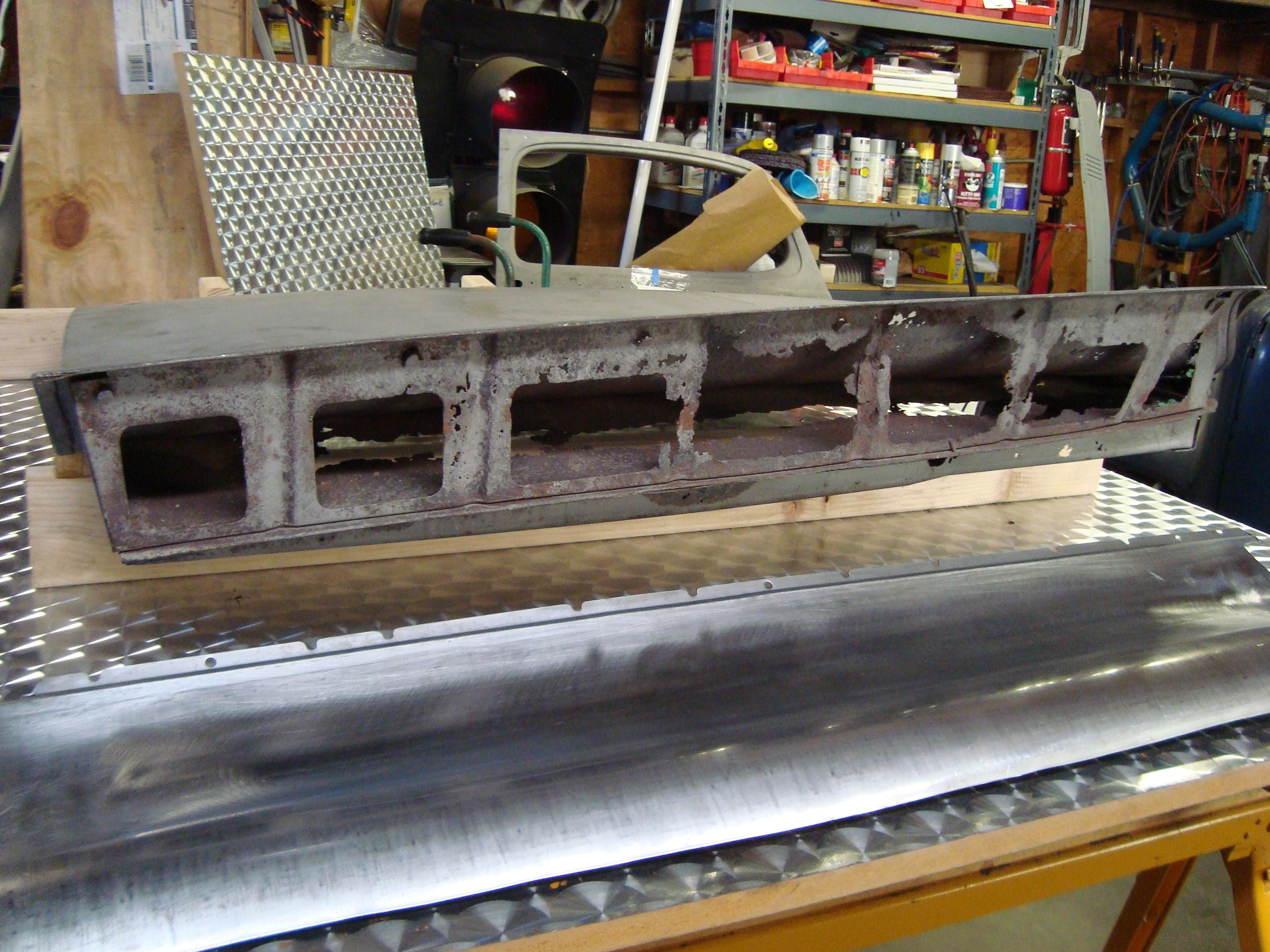
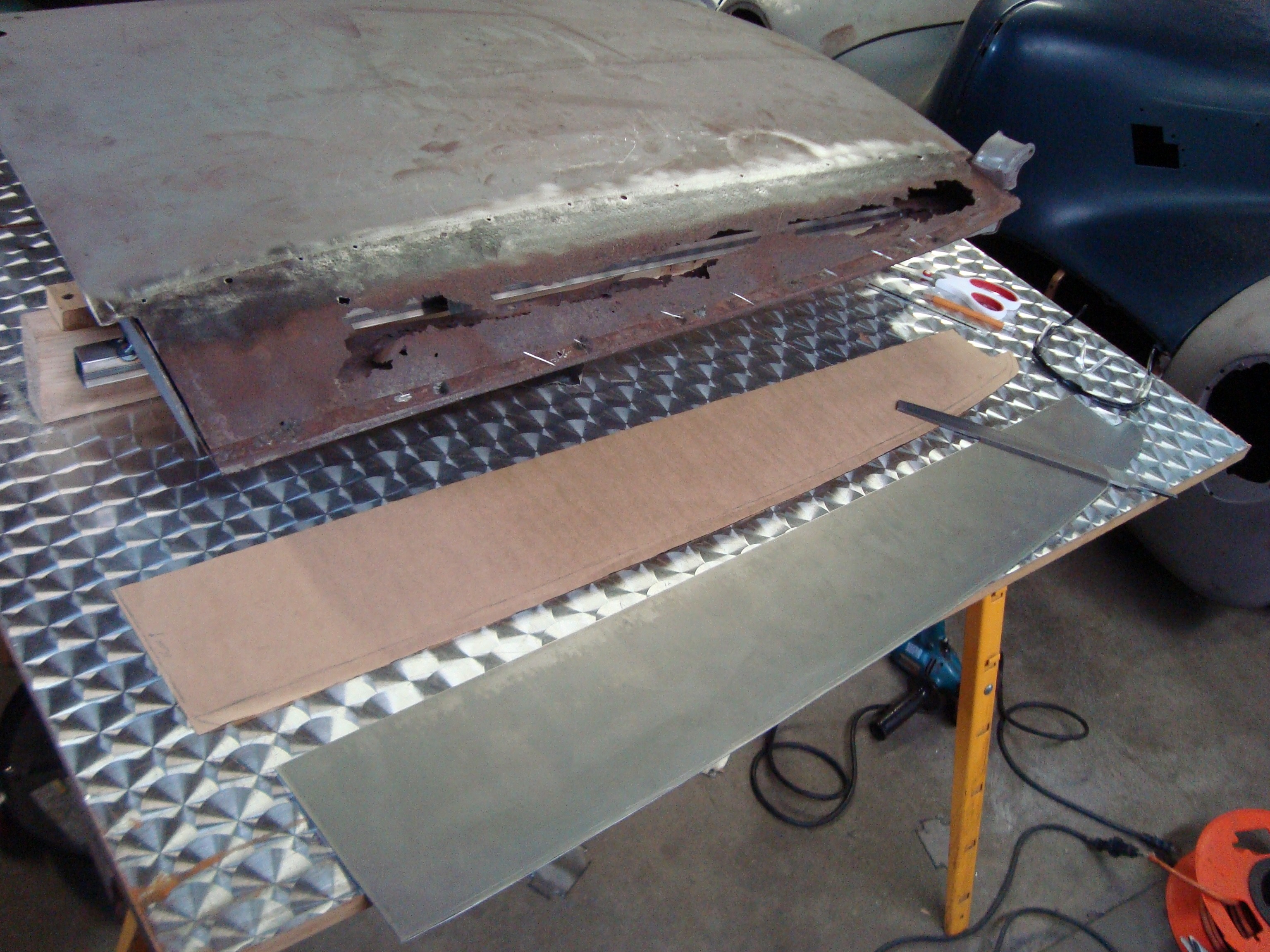
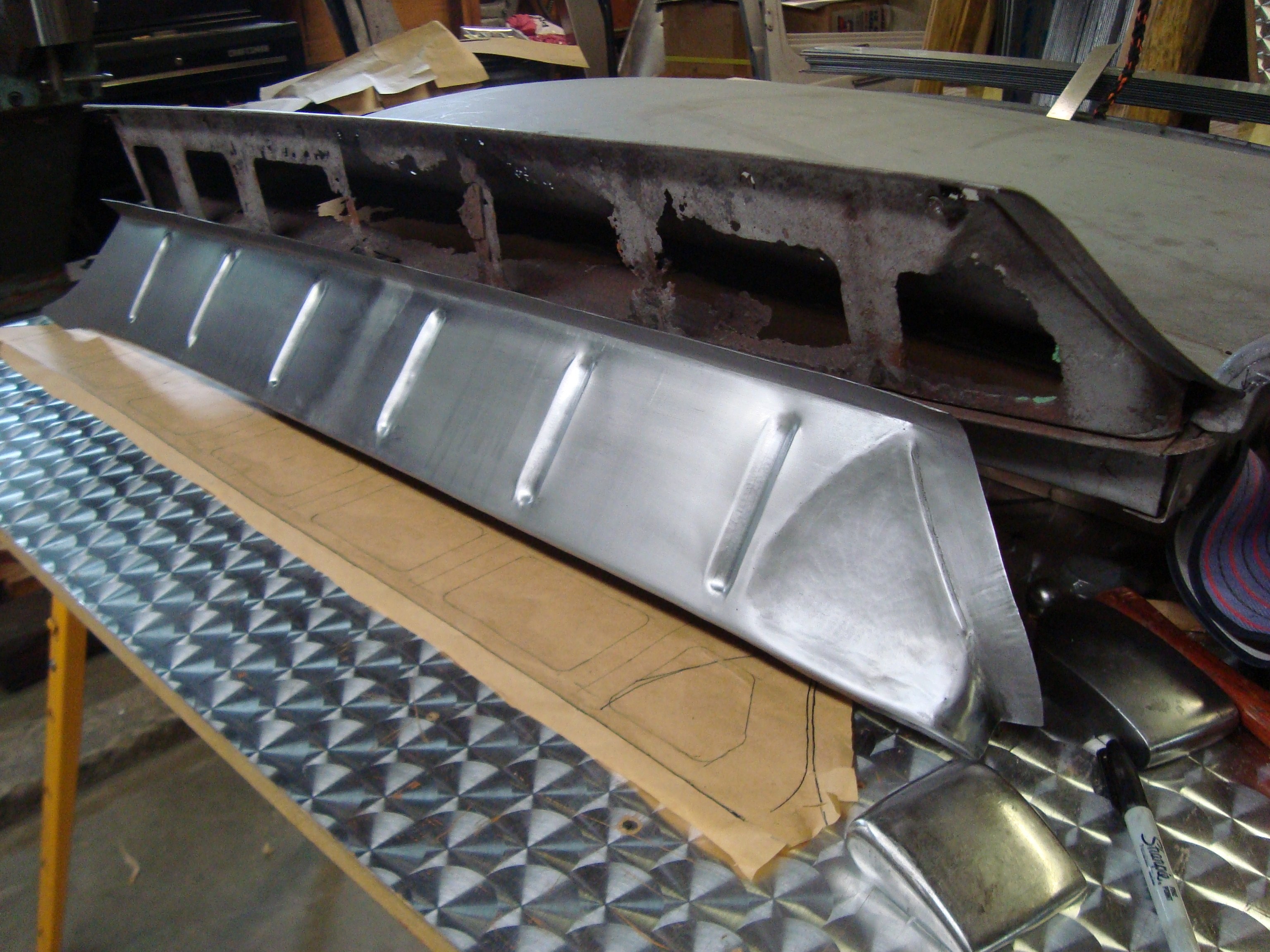
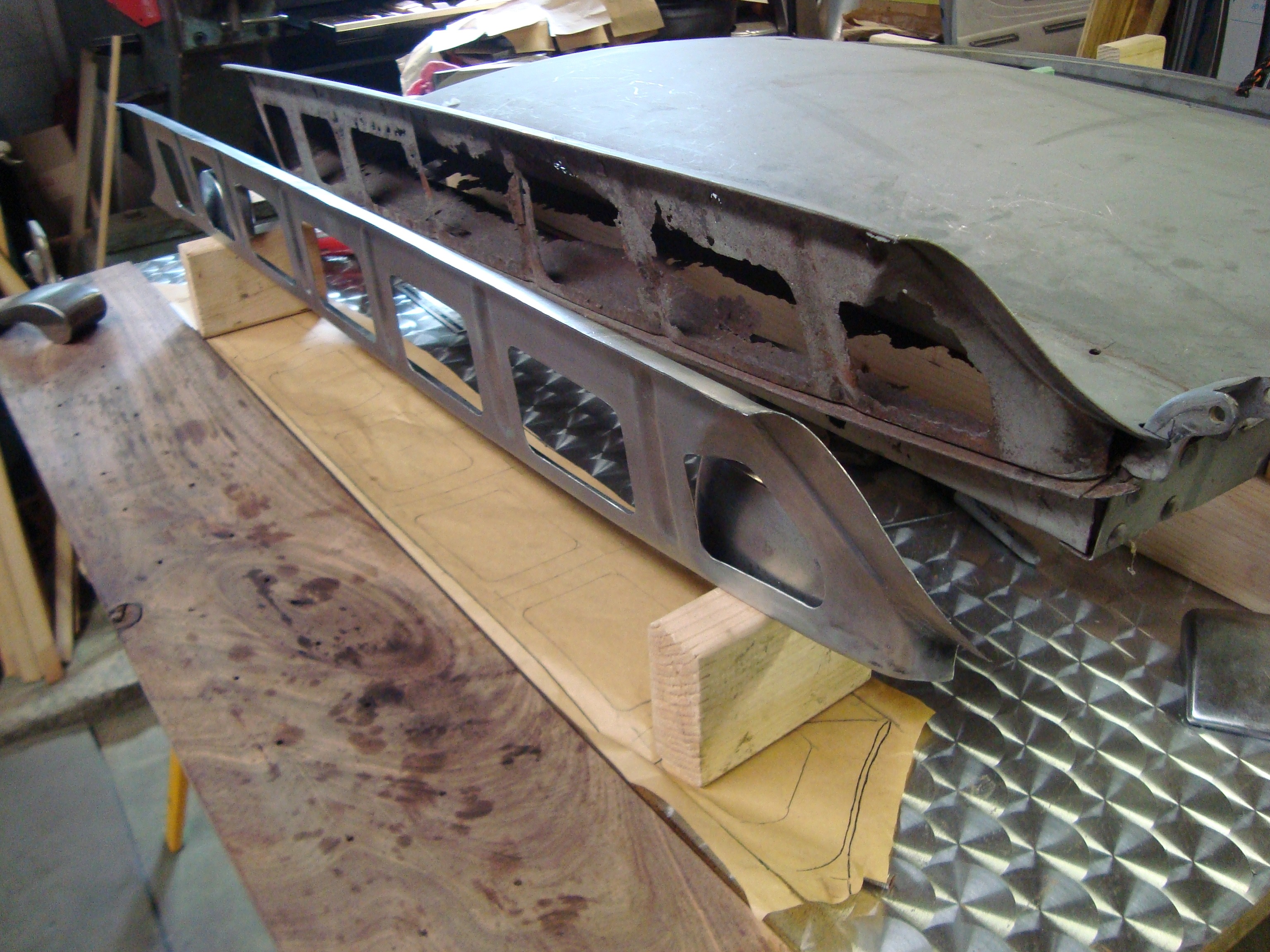
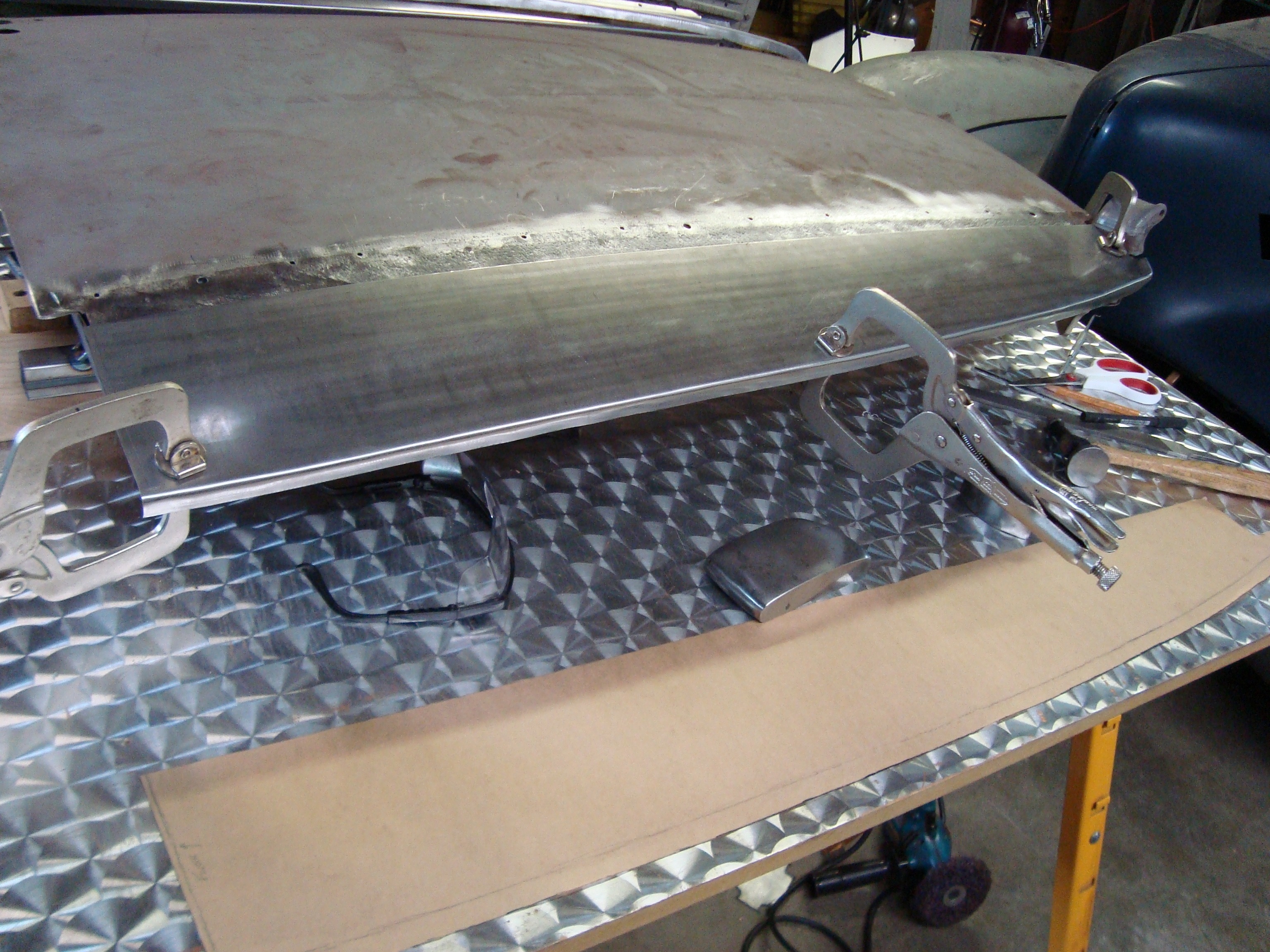
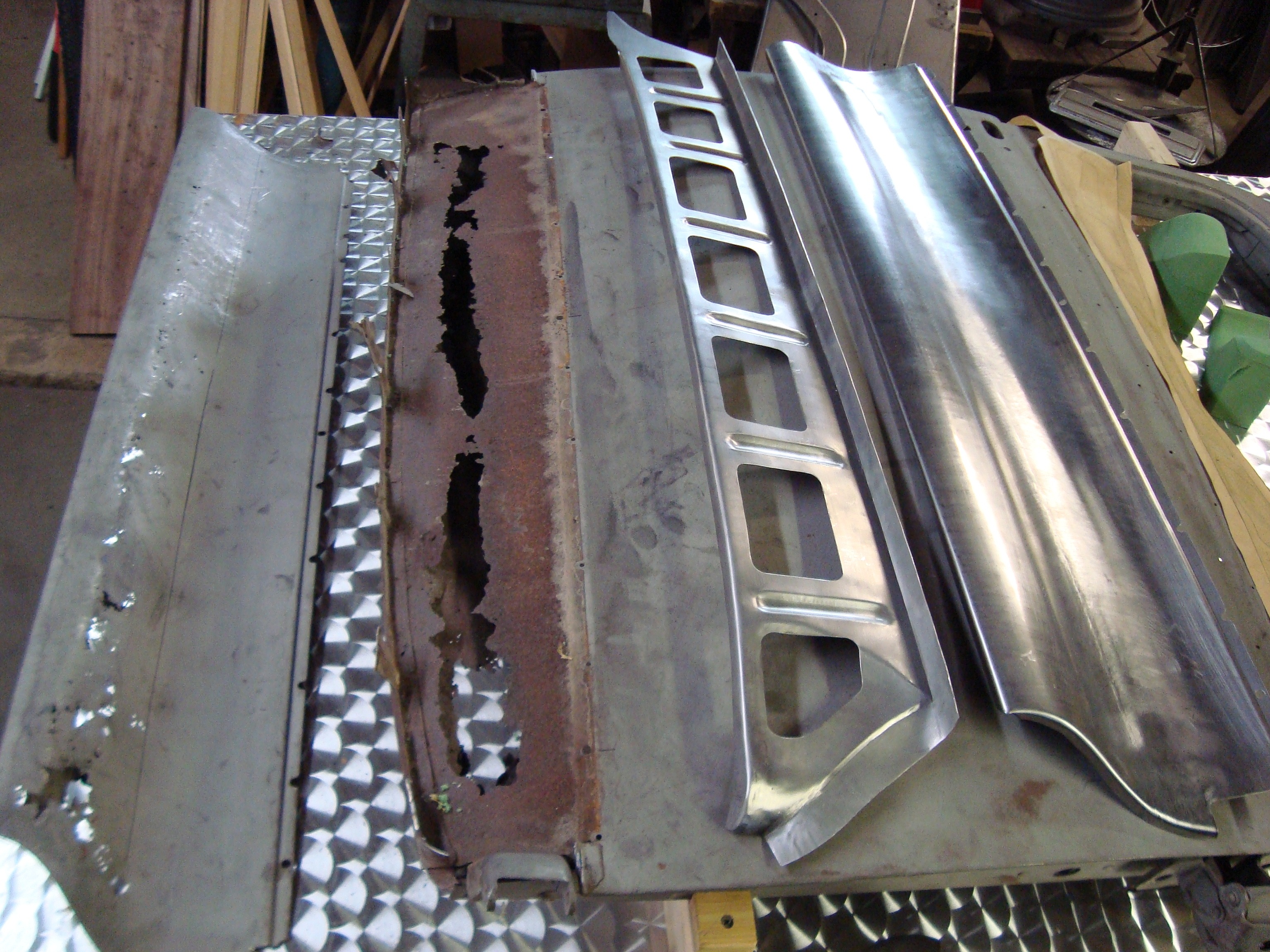
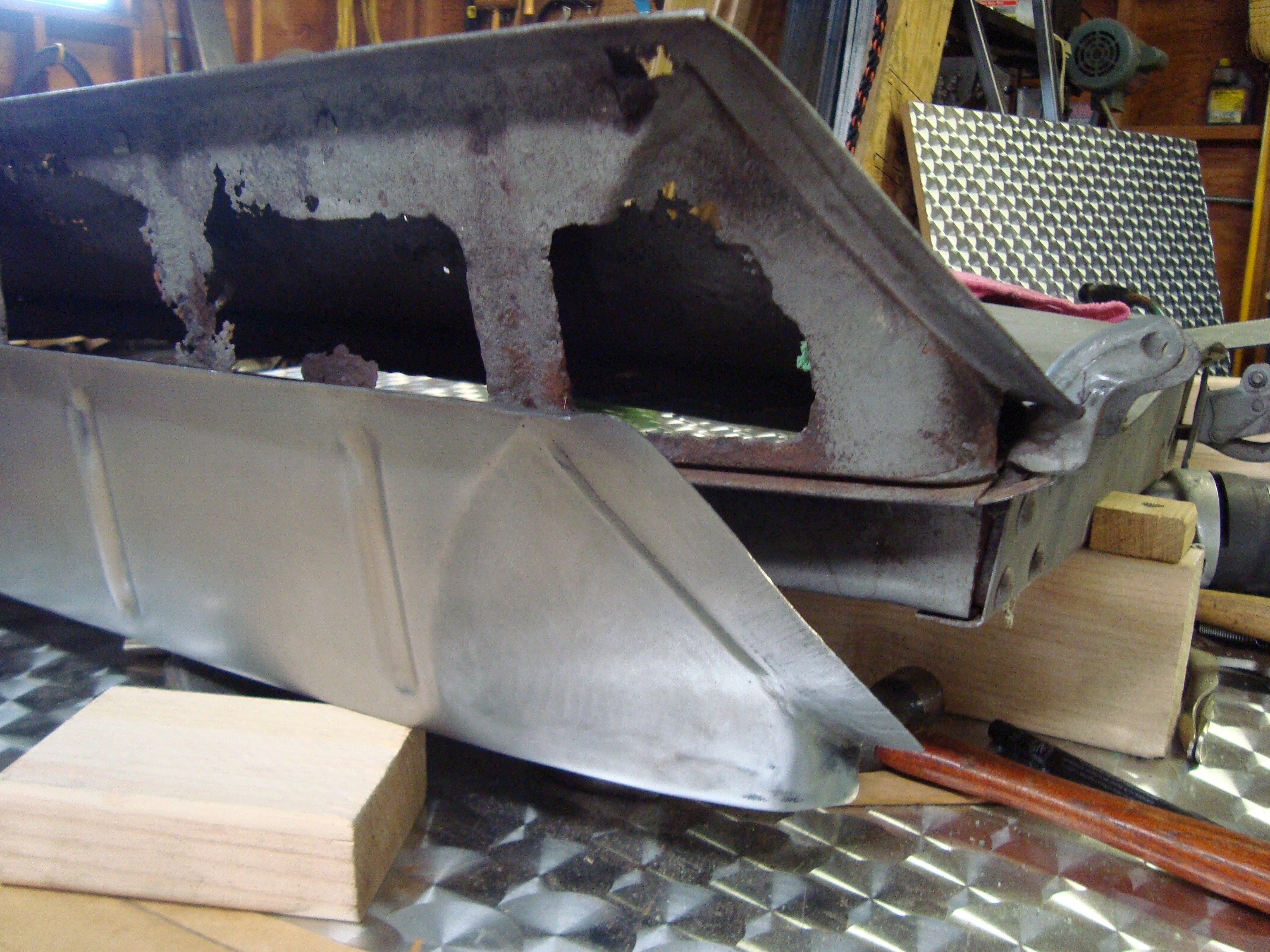
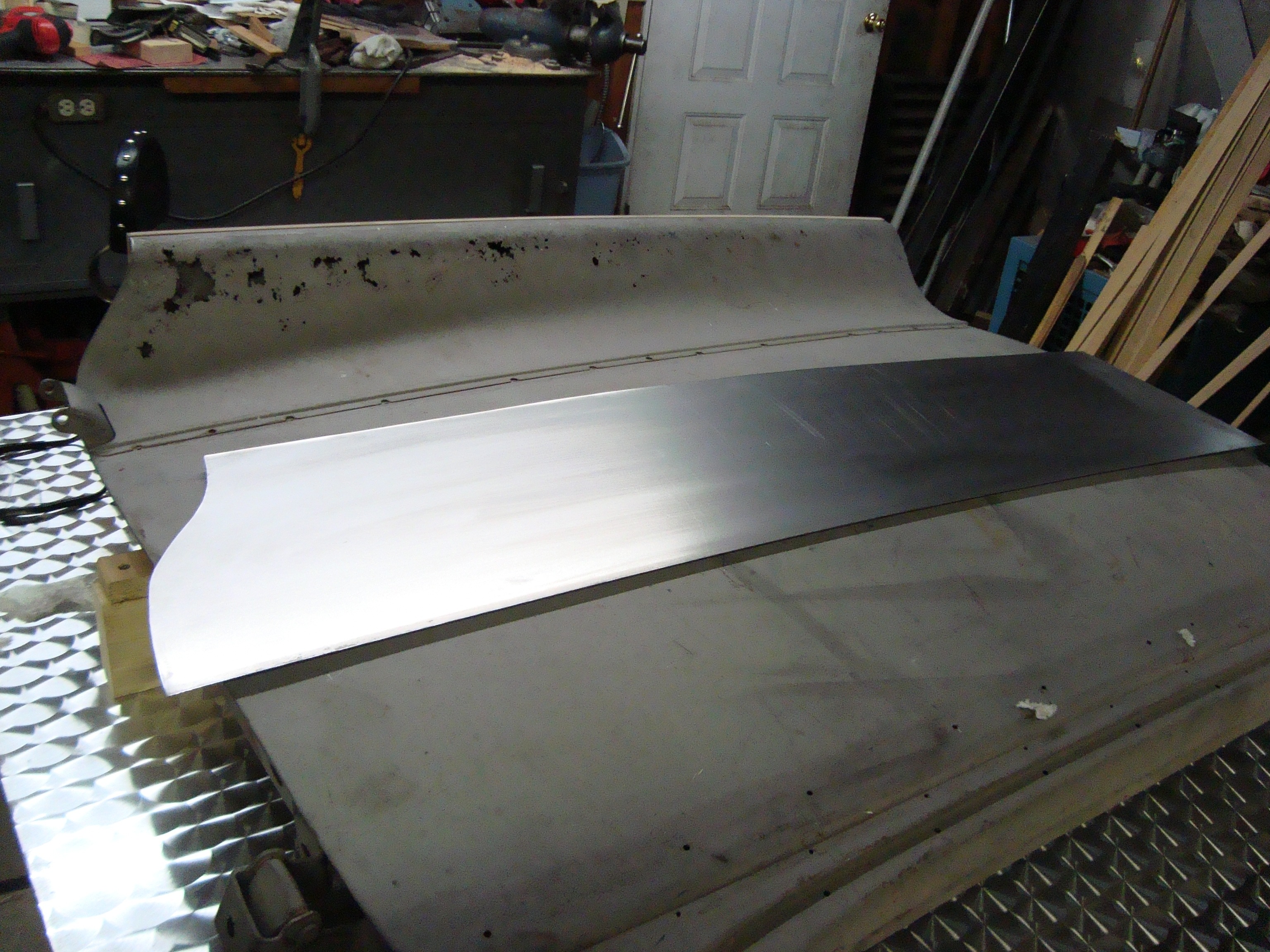 Once the door was holding still and the edges and shapes located. I could start removing the layers. Reproducing each one before going on to the next one, until all of the rusted panels have been replaced. ….I don't know why the pictures are always out of order. But you can figure it out.
Once the door was holding still and the edges and shapes located. I could start removing the layers. Reproducing each one before going on to the next one, until all of the rusted panels have been replaced. ….I don't know why the pictures are always out of order. But you can figure it out.  0
0 -
After all of the pieces were made and fit, I primed the insides that you will not be able to get to once it's welded together. Then, stick it all together, one by one, check your templates, easy as that.
 Lots of inner pieces on these doors.
Lots of inner pieces on these doors.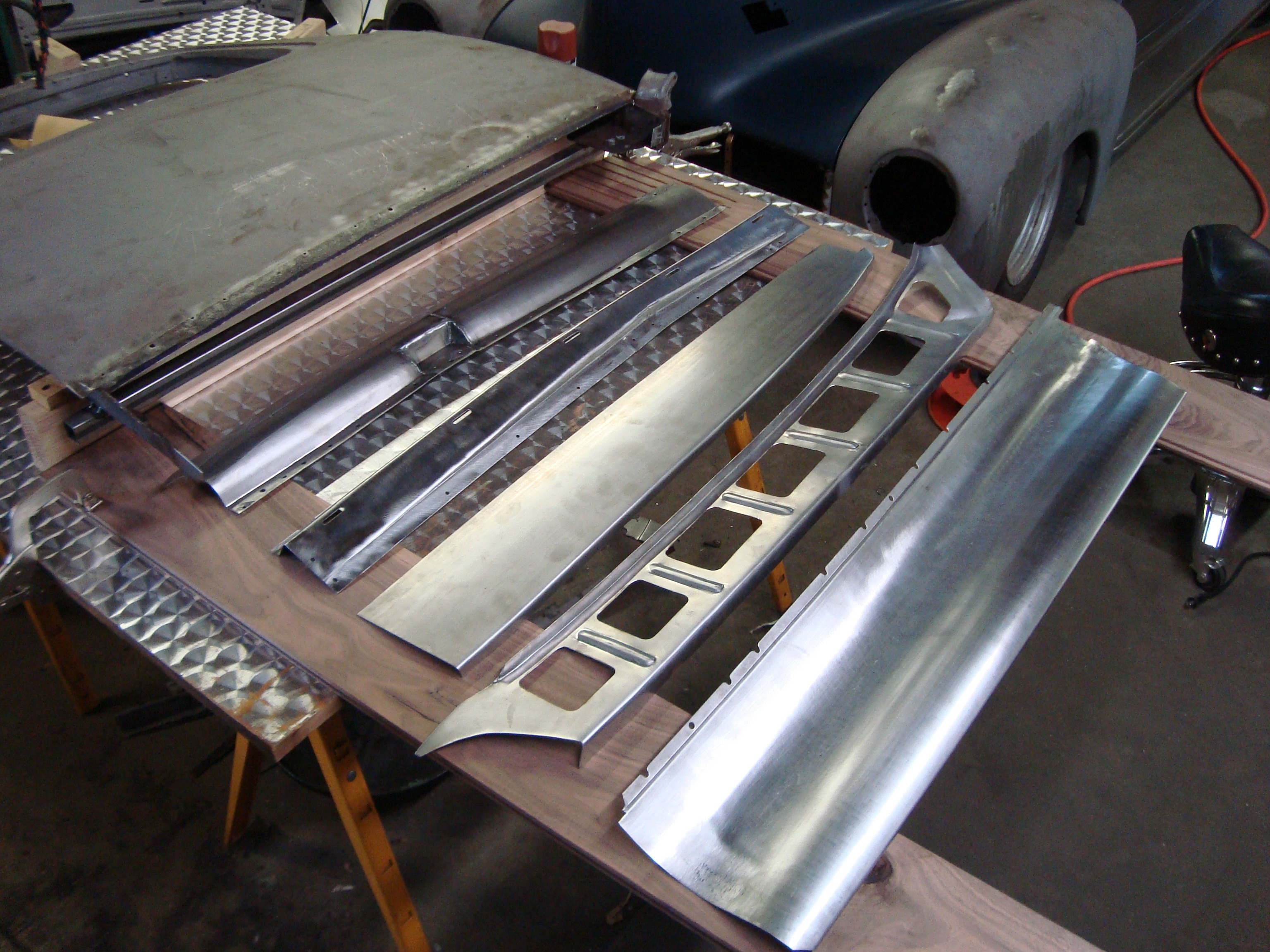
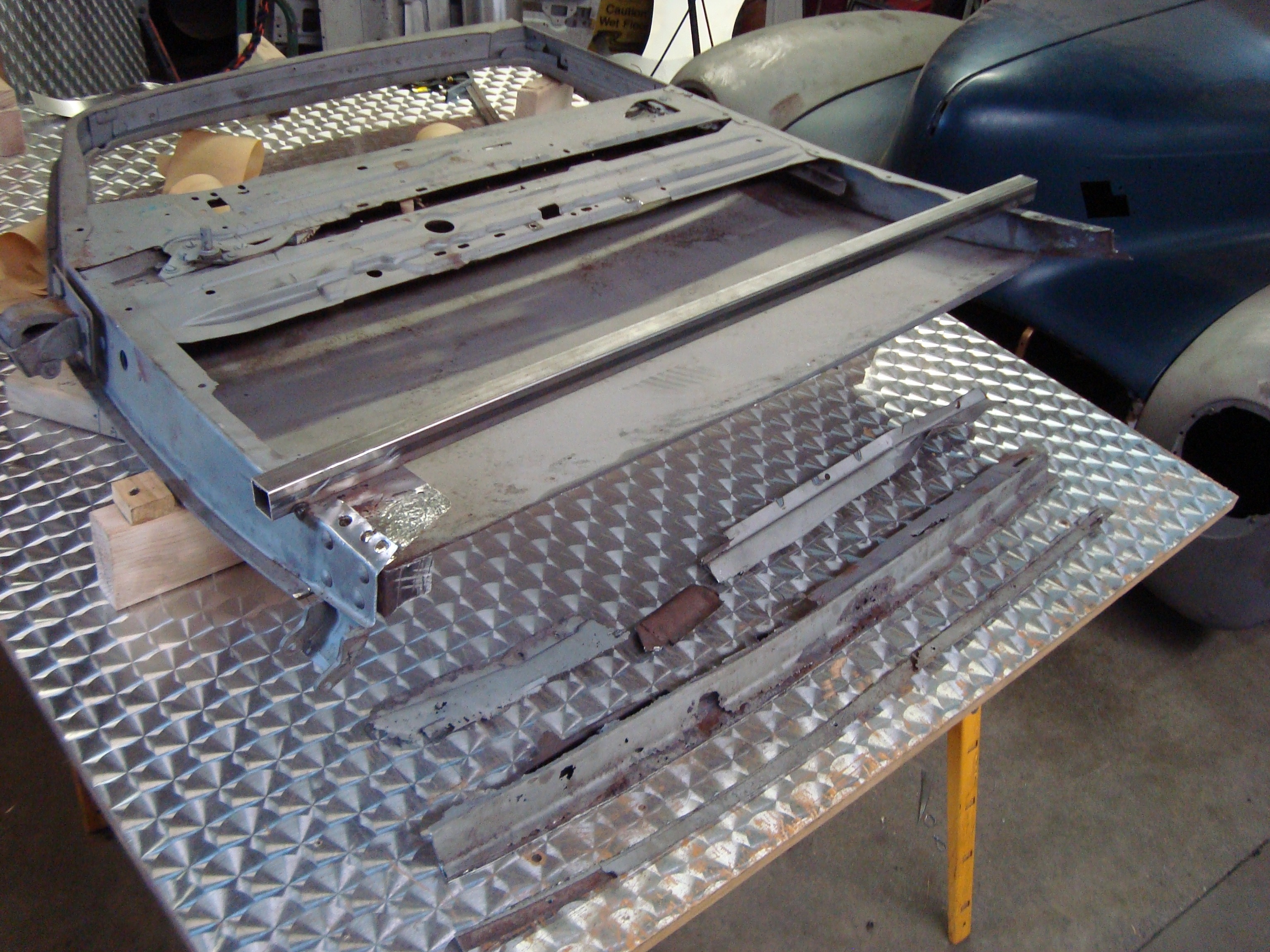
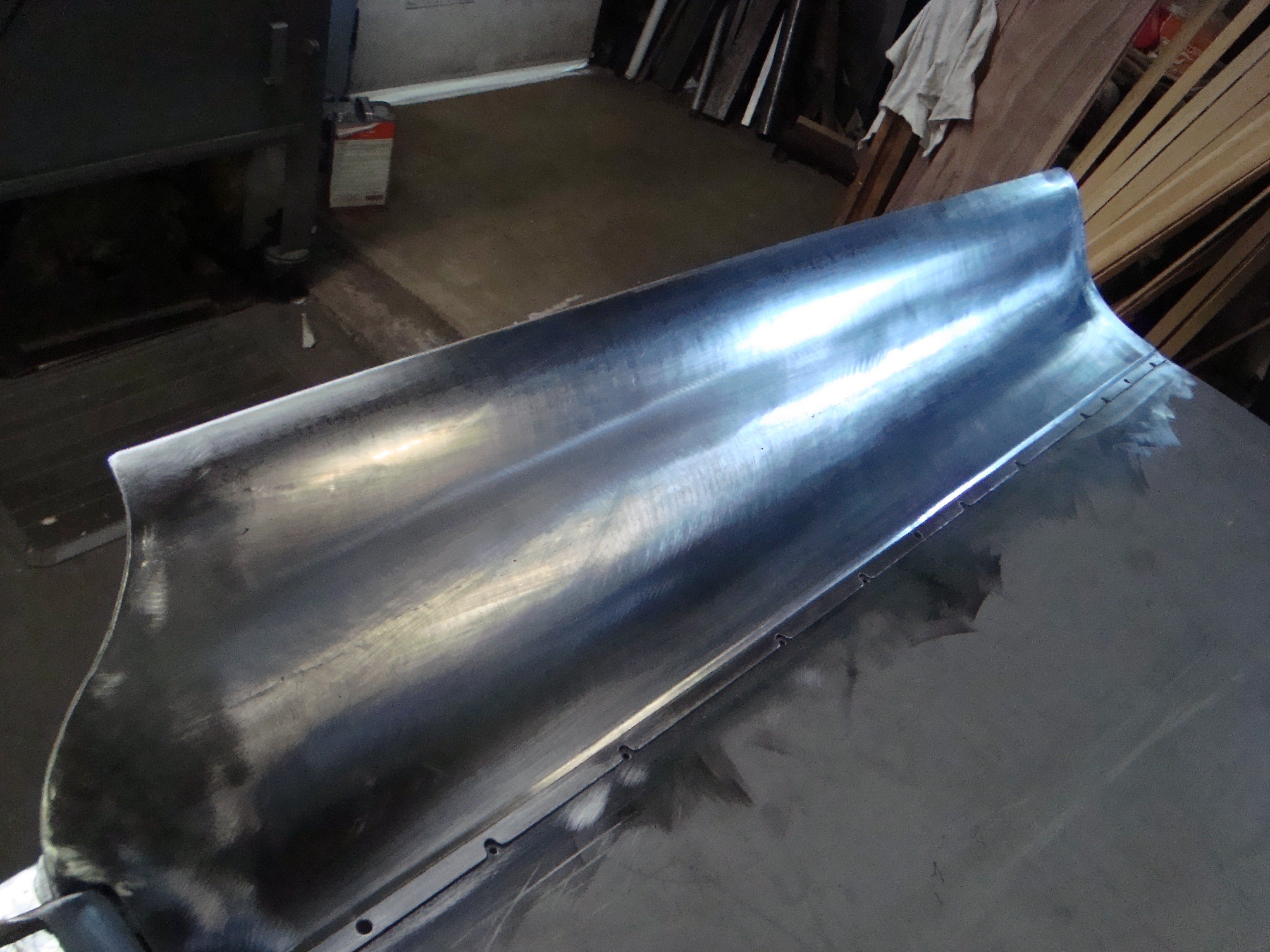
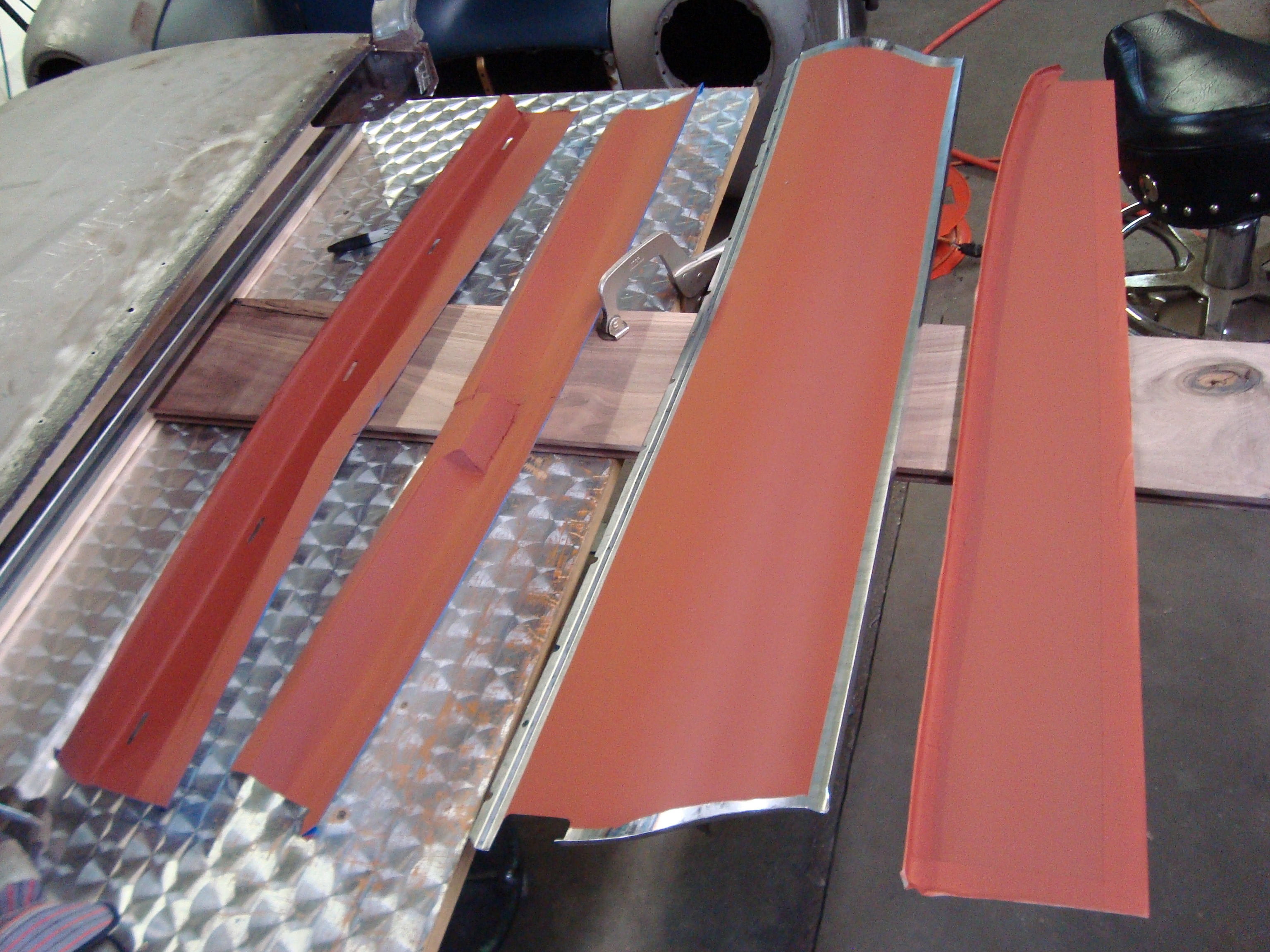
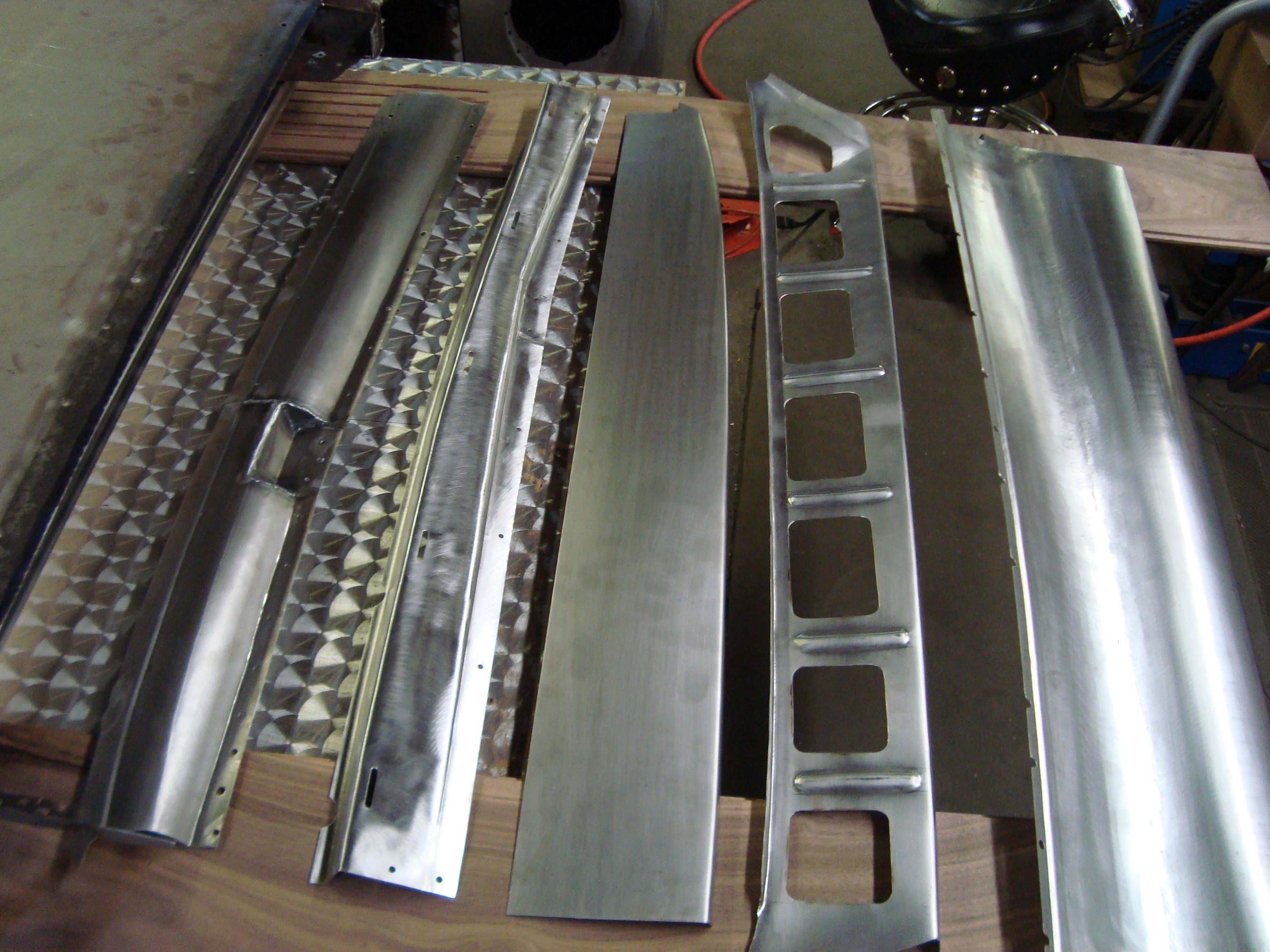
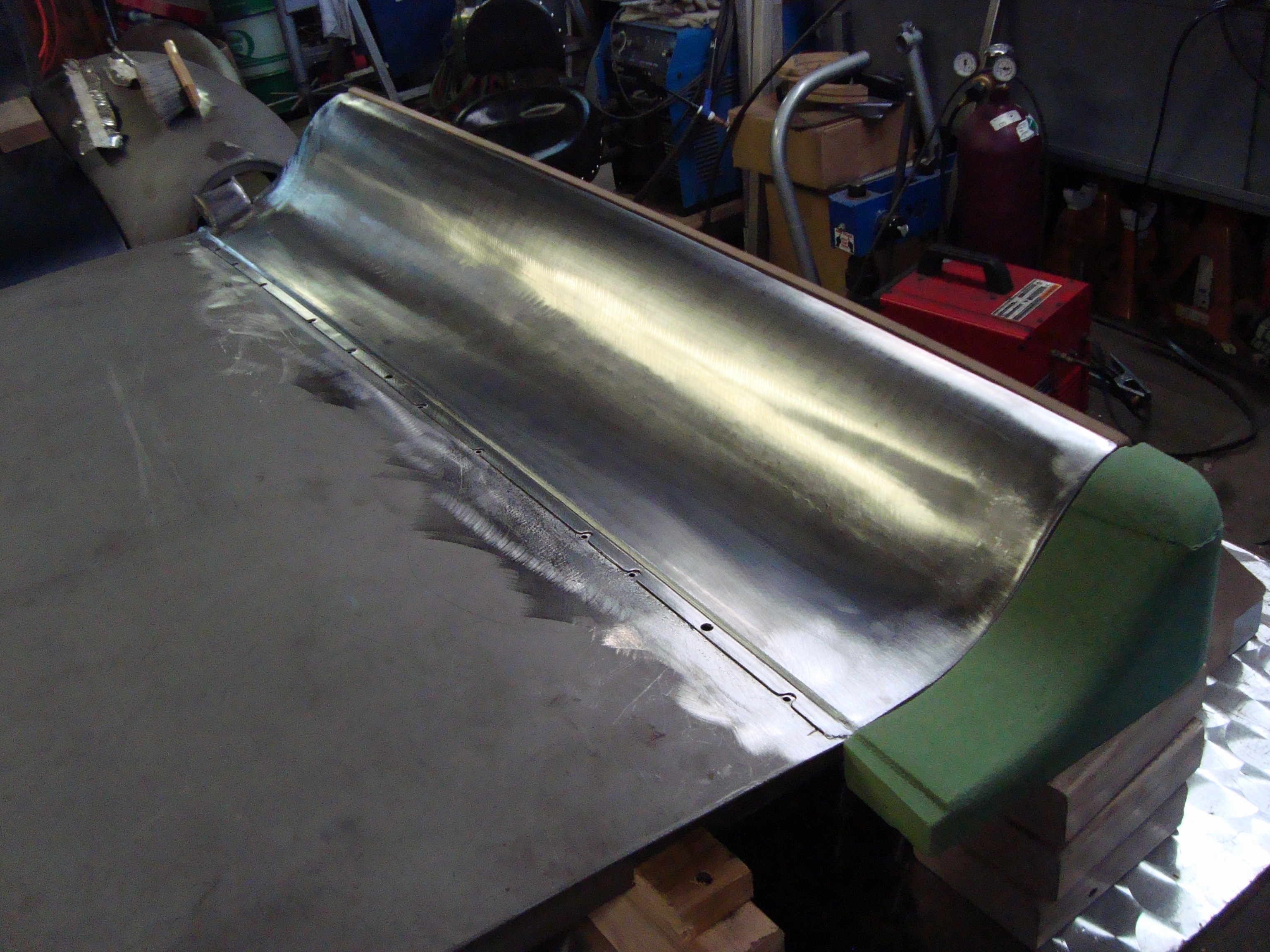
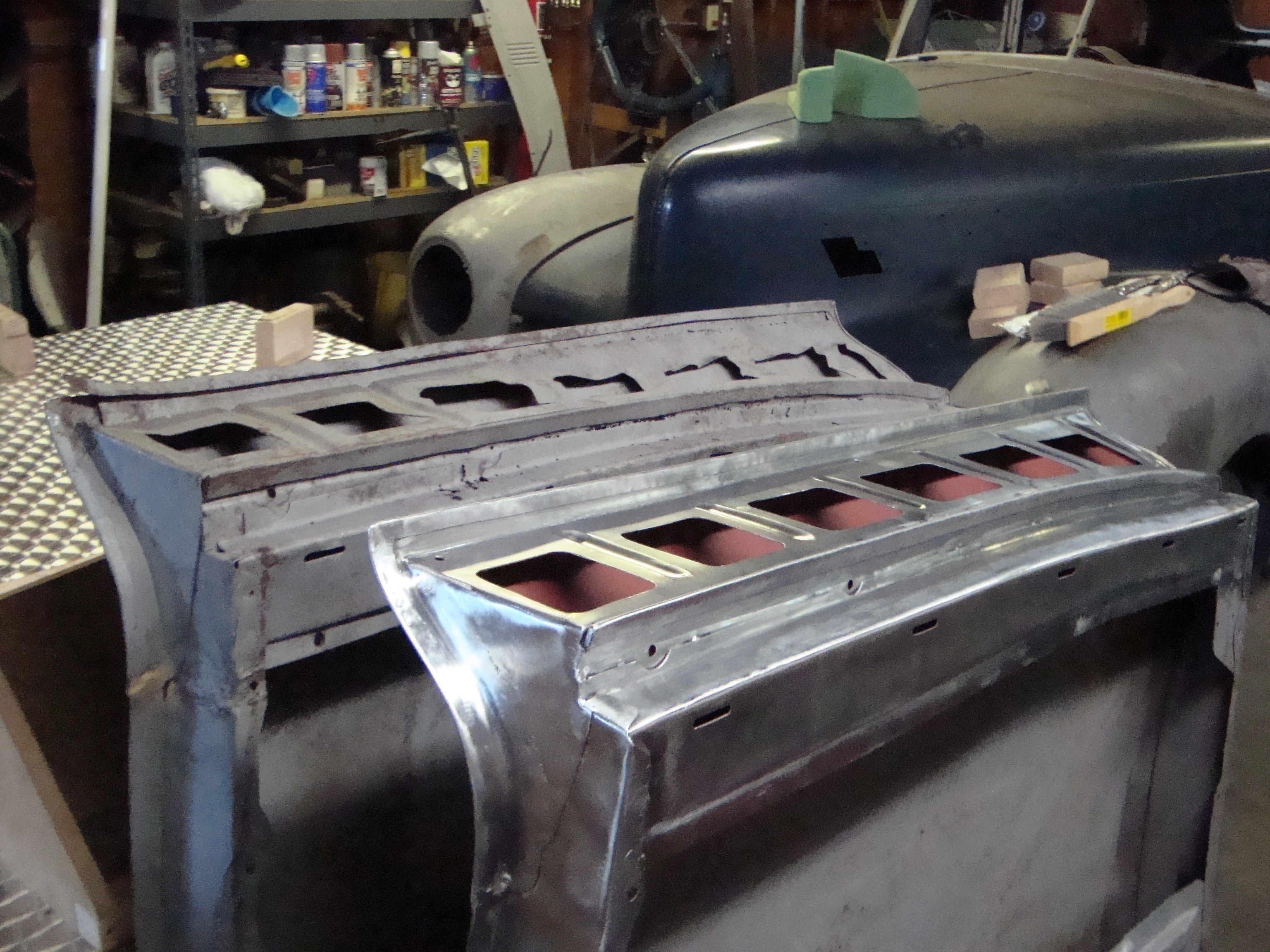
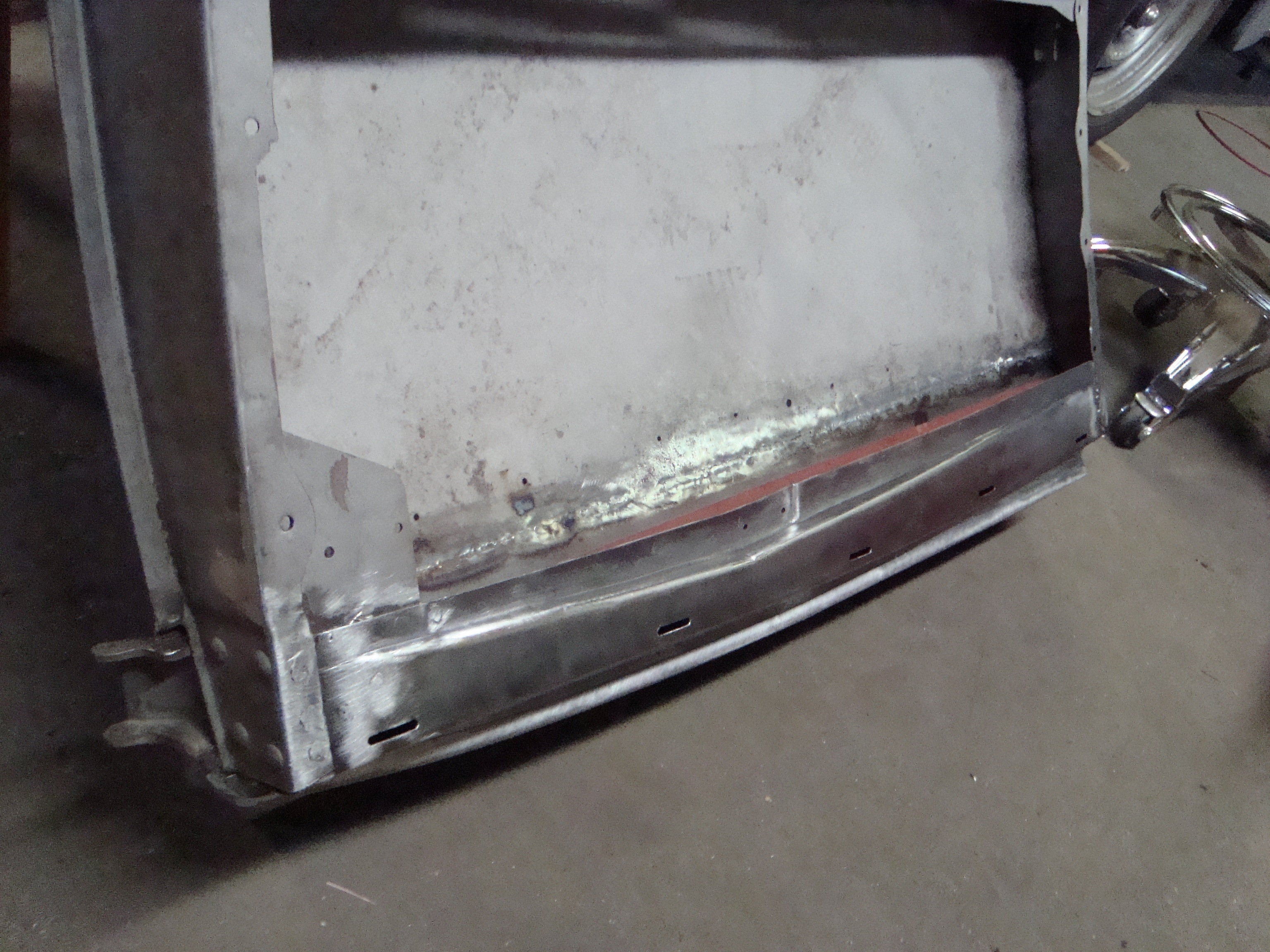
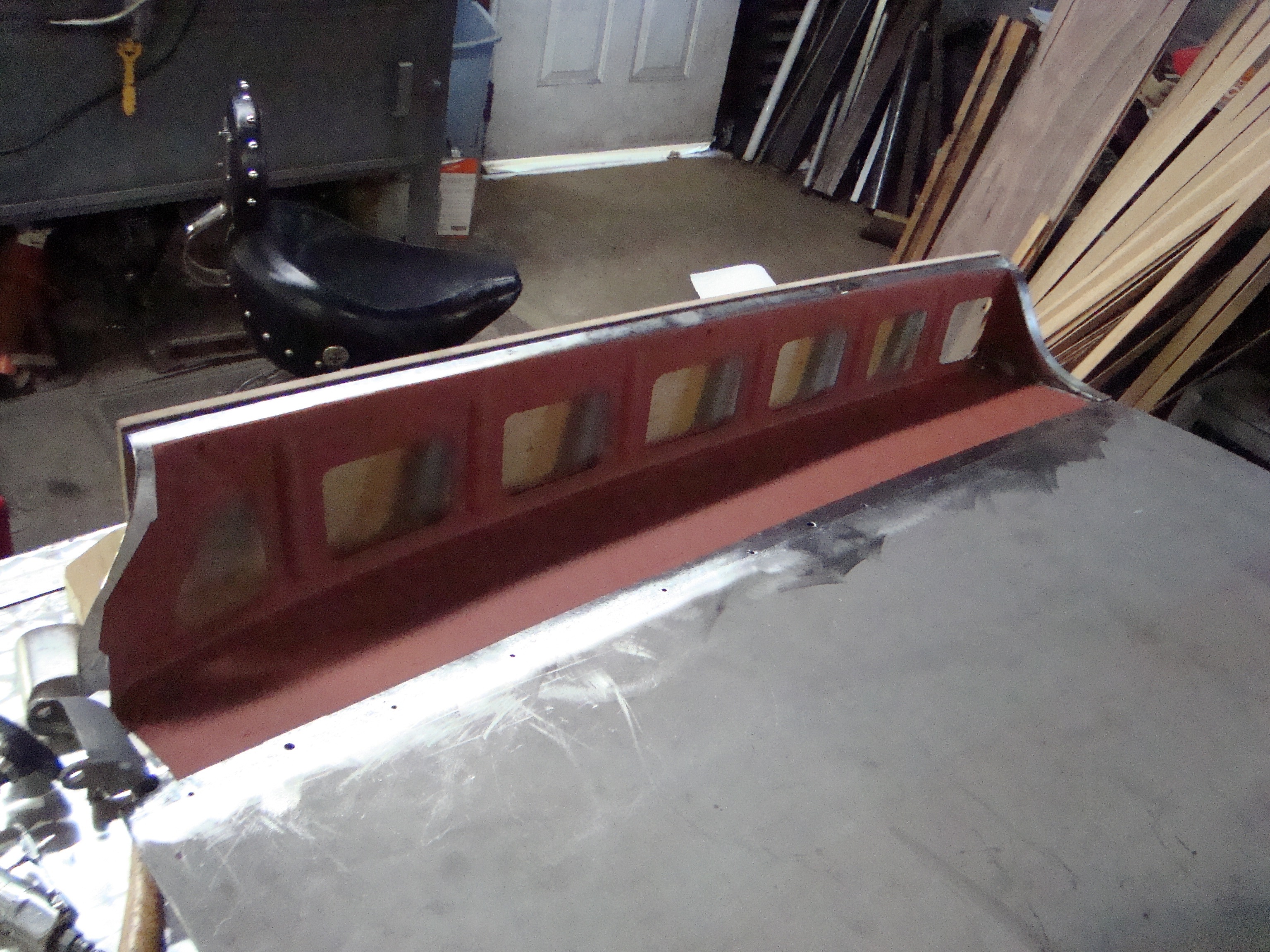
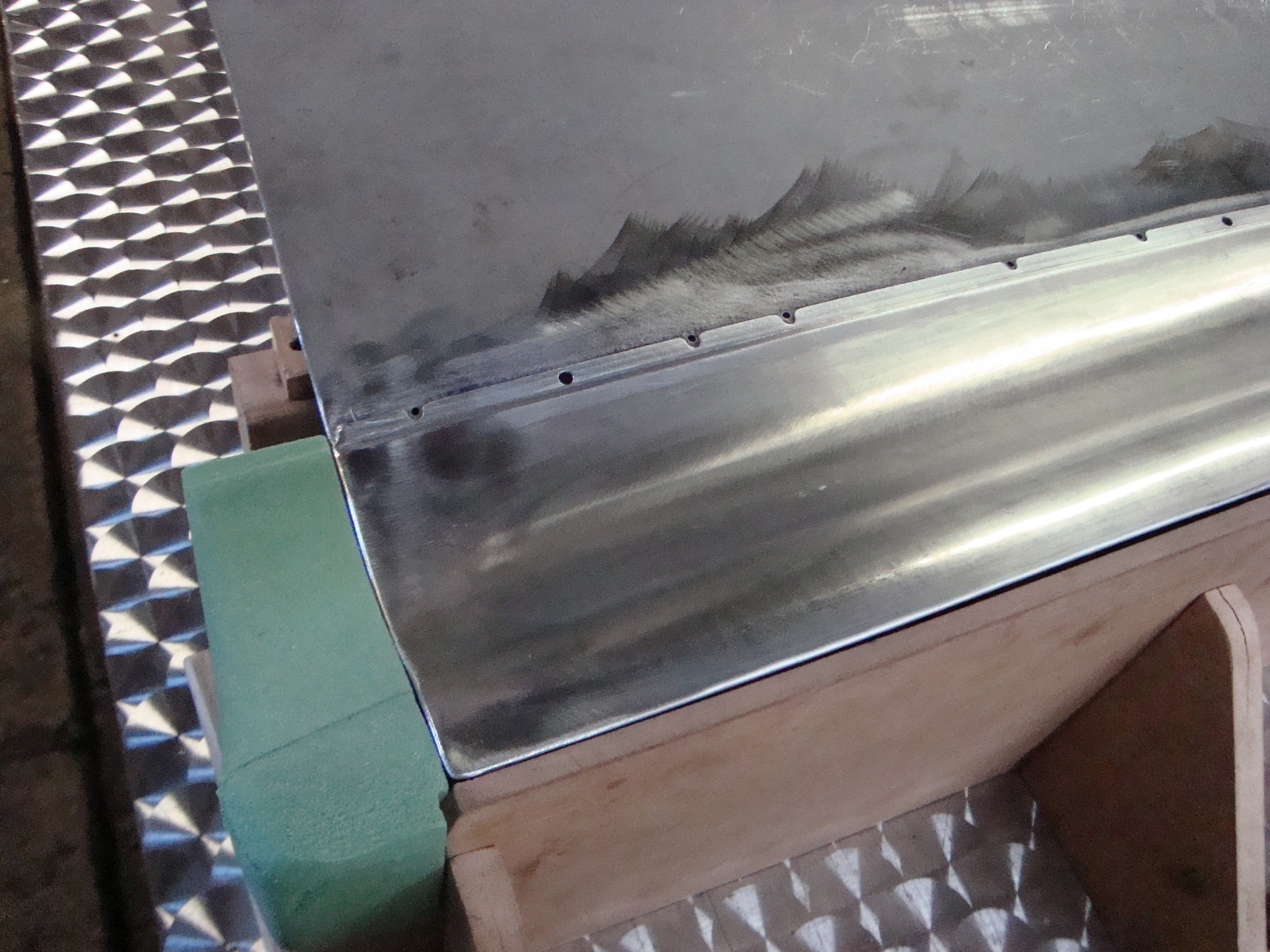
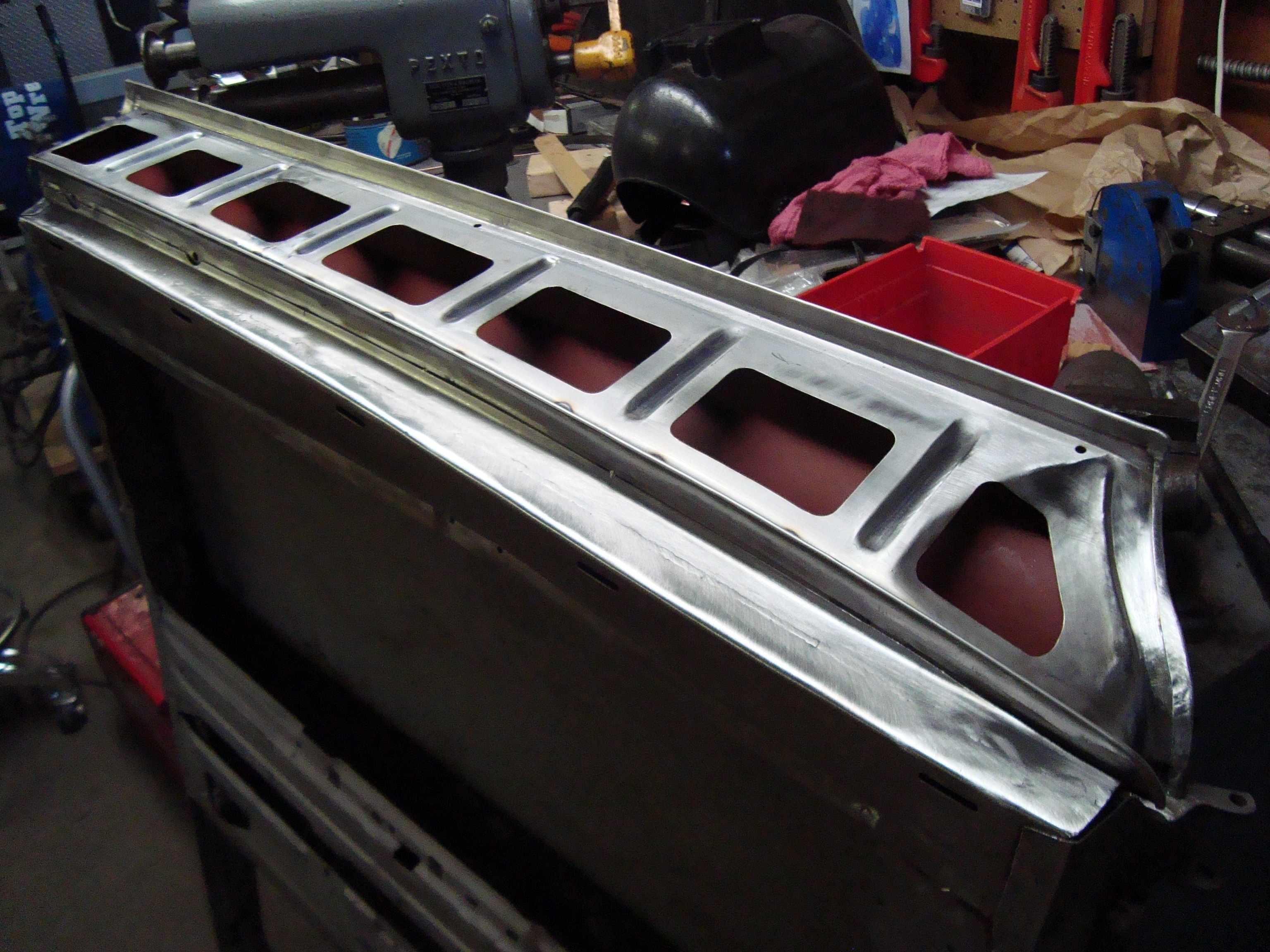
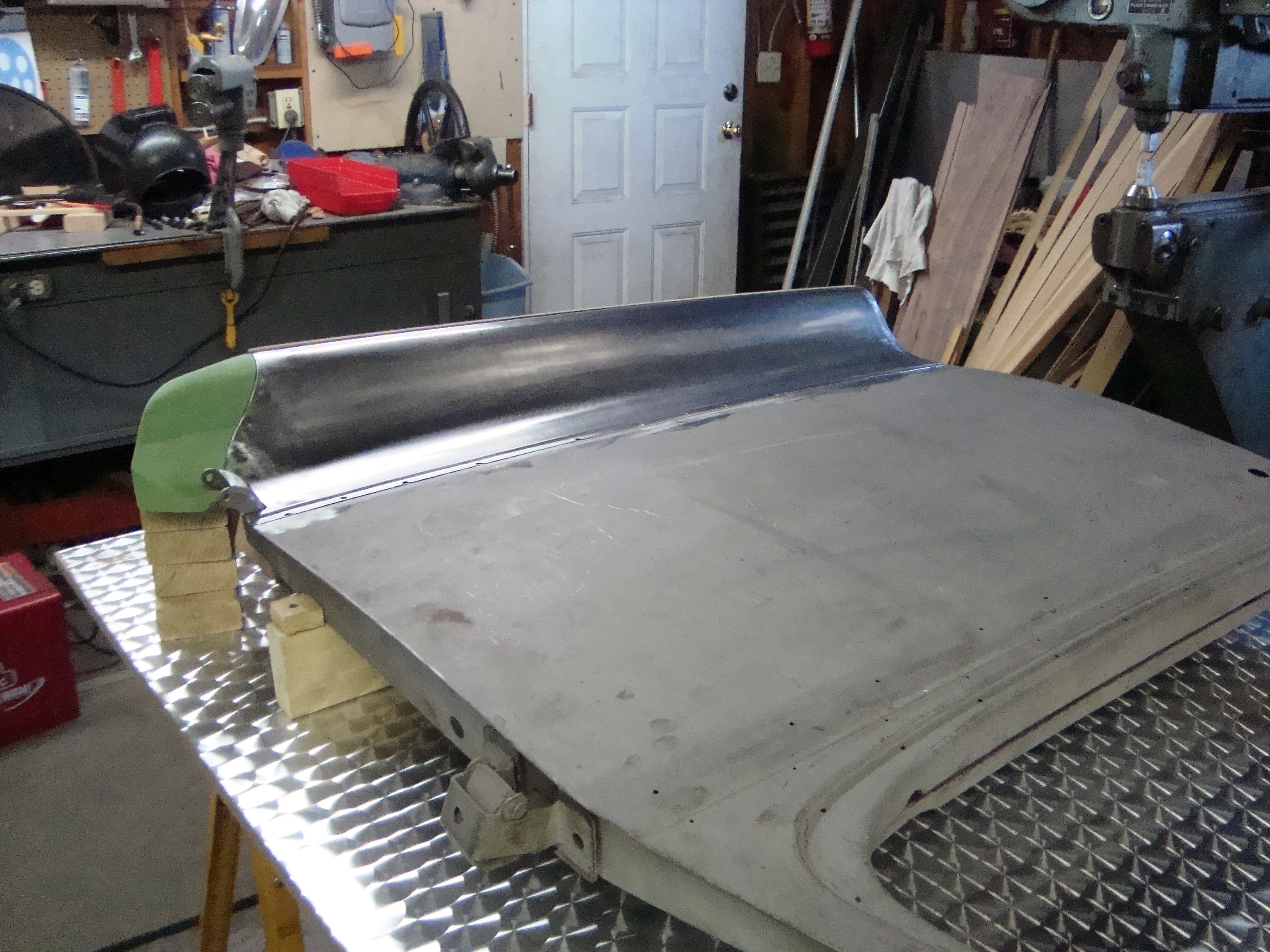
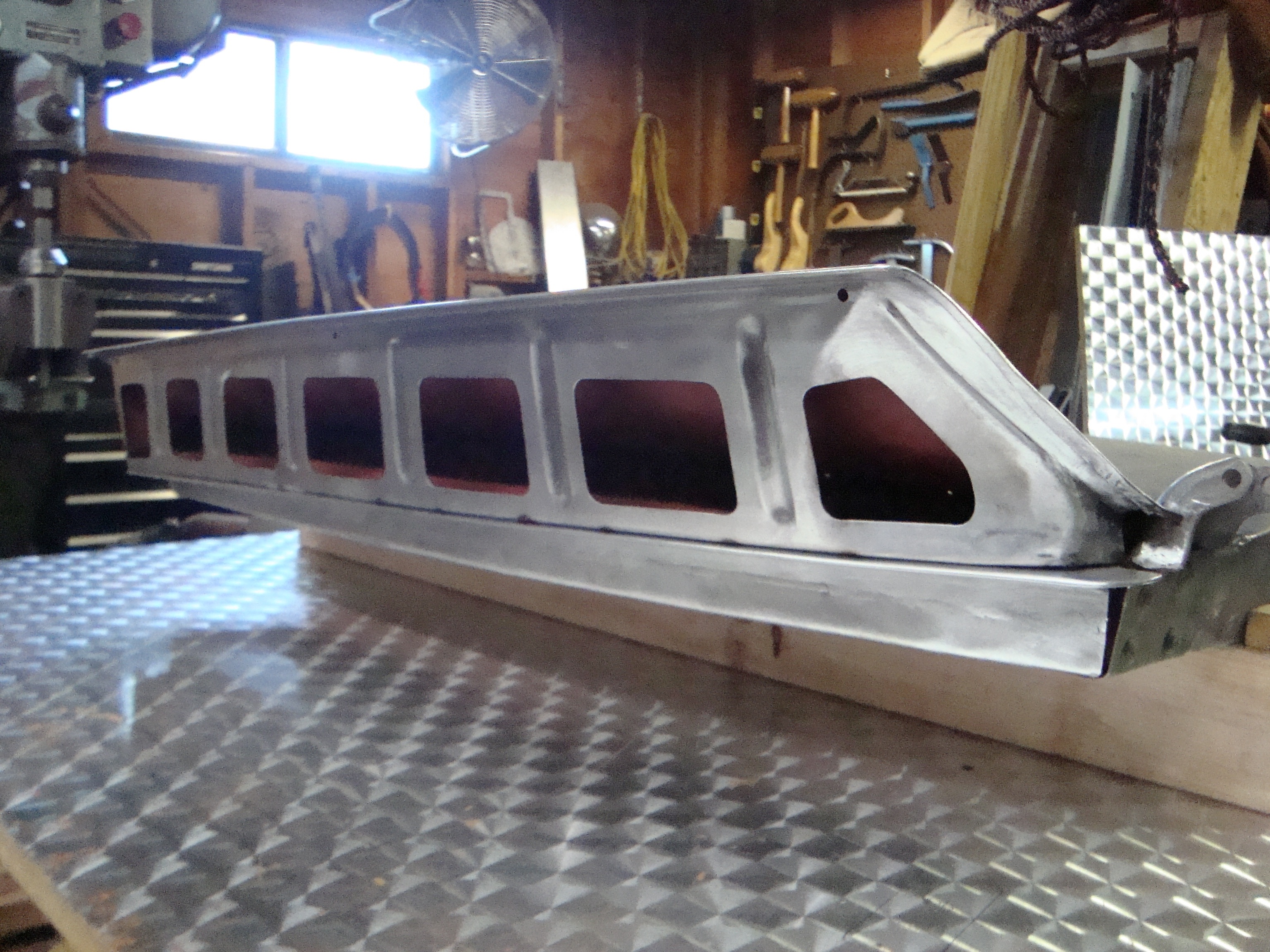
0 -
Beautiful work!!
0 -
Great as always.0
-
Bent, what did you use to cut the bottom skeleton holes out?
To give us some perspective, how many hours did this take?
I'm curious about the table top, looks like a piece of engine turned sheet steel on top of plywood?
You screwed the fixture blocks/form to that so the door is held in place?
Do you gas, tig or mig weld your work?
Always learning!
0 -
Kdancy, the holes were cut out by hand. Drill the corners close, connect the four corner holes, hand file up to the line.
Hours, I don't remember. This job was a while ago. Probably around a week, no more than that? I would guess? But I bill time and material. Whatever it takes, that's what it costs. Every time I try and estimate or bid a job, I short change myself, it seems.
The table. I used to have a shop that did production wood finishing/painting/staining. Did the wood trim and mouldings for large jobs. Did the cabinet finishing for a supplier to Home Depot's cabinets. Did the moulding and trim for the Bellagio Casino in Vegas, etc.. That piece of table top was a reject in my shop for water damage on the edge? I think? Can't remember. It's MDF with a vainer glued to the top. Cut up and used as trim in Carl's Jr. and Hardy's fast food restaurants.
Fixture blocks. I set the door on the table in a position I liked. Then screwed blocks down into the table all around the door so it couldn't move. But so I could also remove the door to work on it, flip it over, etc.. Then put it back in the exact same position to make sure my templates were still right.
Welding. It depends. Each has it's advantages in different situations. Mostly (80%) I TIG. But if I'm doing one handed or out of position, upside down, filling a big gap, dirty area that I couldn't get clean, whatever, then I might MIG. Sometimes I might gas weld too. It all depends. But I certainly prefer TIG.
Always trying to learn, me too. I'm working on gas welding the sheet metal right now. The old guys prefer that. I'm going to try it and see.
0 -
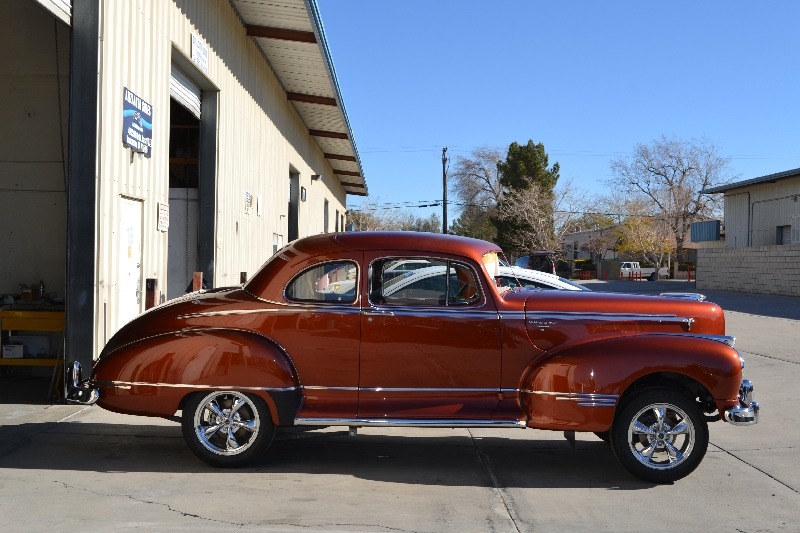 Found a picture of the door on the car, done and painted.
Found a picture of the door on the car, done and painted.
0 -
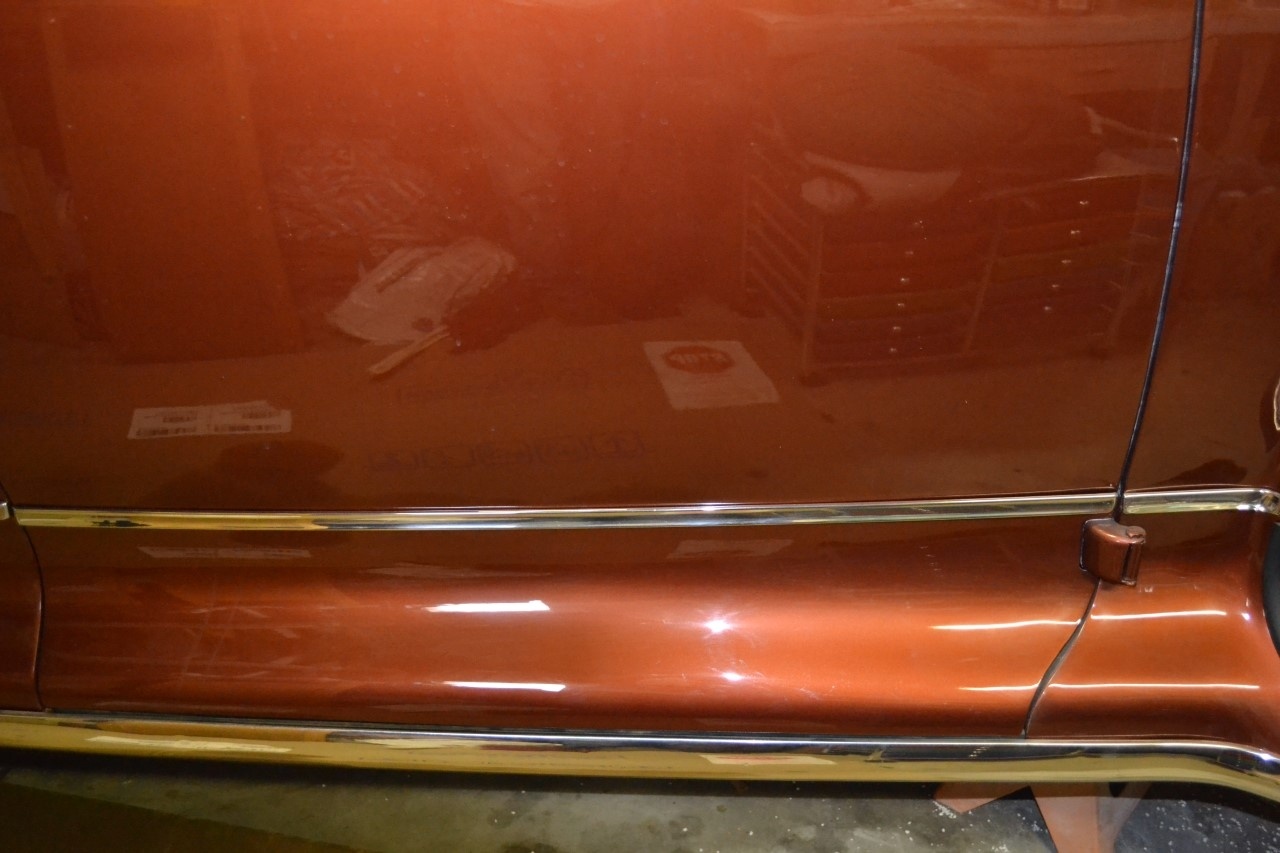 The owner of the car sent me another picture. Thank you Butch!
The owner of the car sent me another picture. Thank you Butch! 
0
Categories
- 36.9K All Categories
- 111 Hudson 1916 - 1929
- 20 Upcoming Events
- 92 Essex Super 6
- 28.6K HUDSON
- 569 "How To" - Skills, mechanical and other wise
- 995 Street Rods
- 151 American Motors
- 178 The Flathead Forum
- 49 Manuals, etc,.
- 78 Hudson 8
- 44 FORUM - Instructions and Tips on using the forum
- 2.8K CLASSIFIEDS
- 606 Vehicles
- 2.1K Parts & Pieces
- 77 Literature & Memorabilia
- Hudson 1916 - 1929 Yahoo Groups Archived Photos


